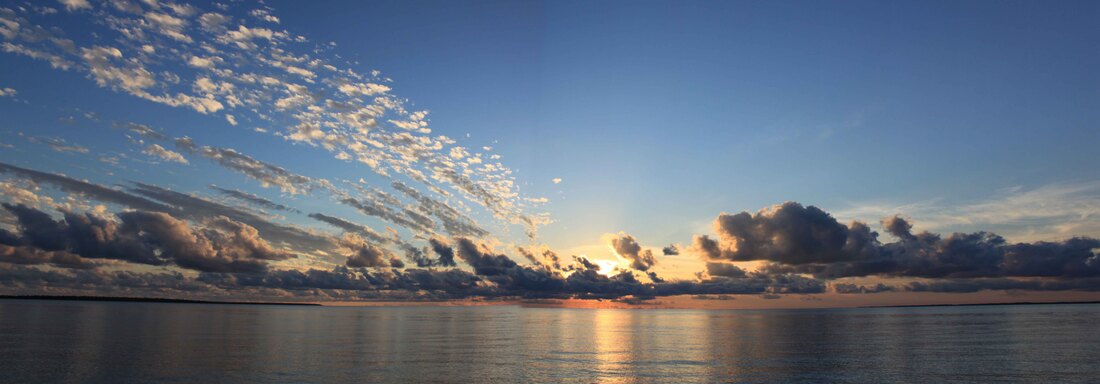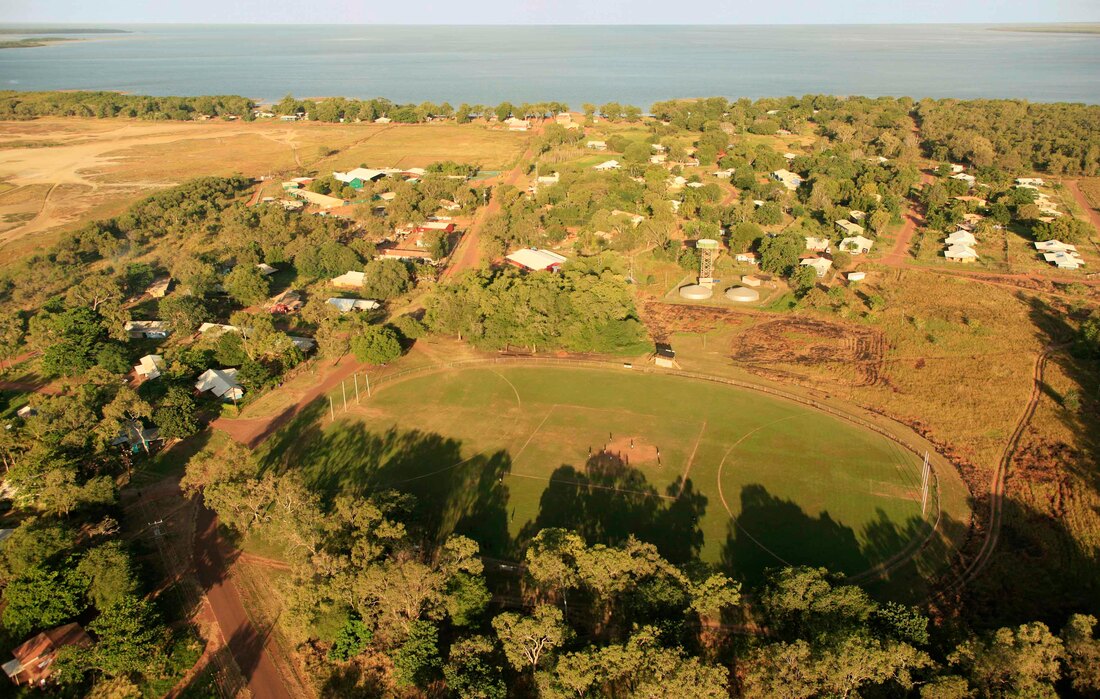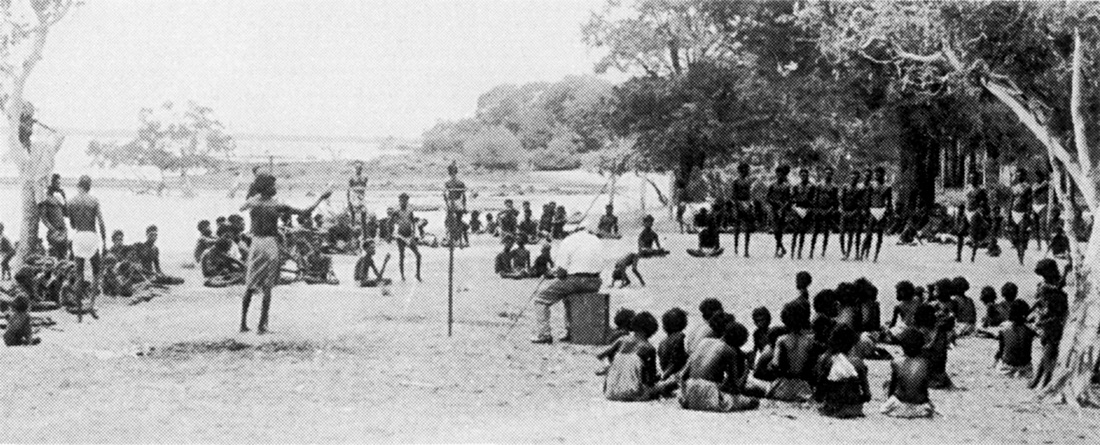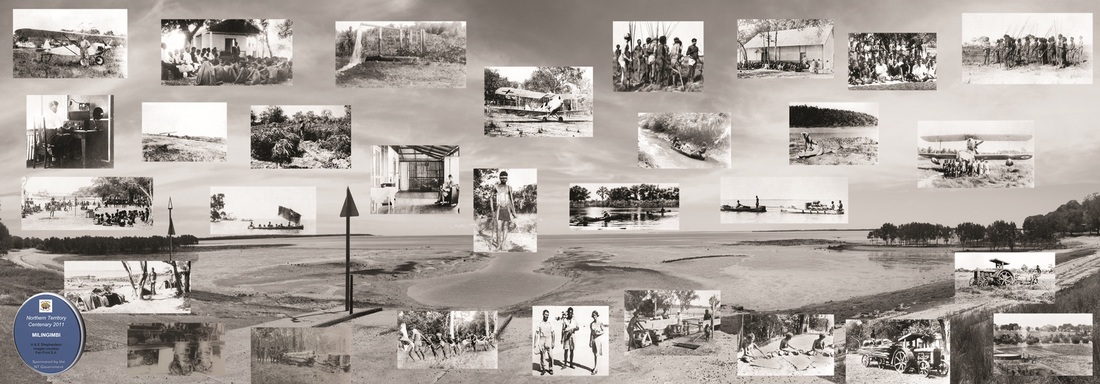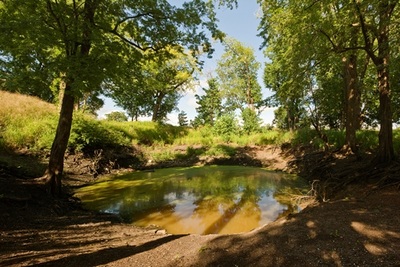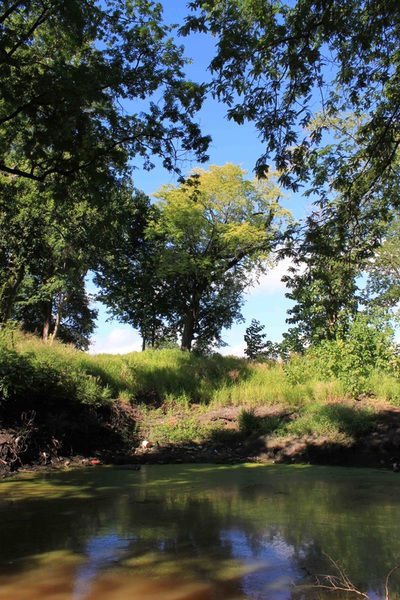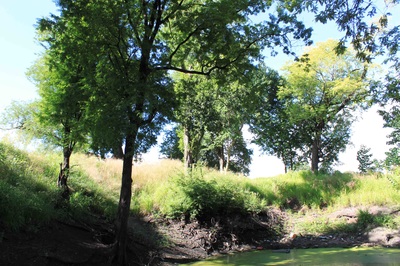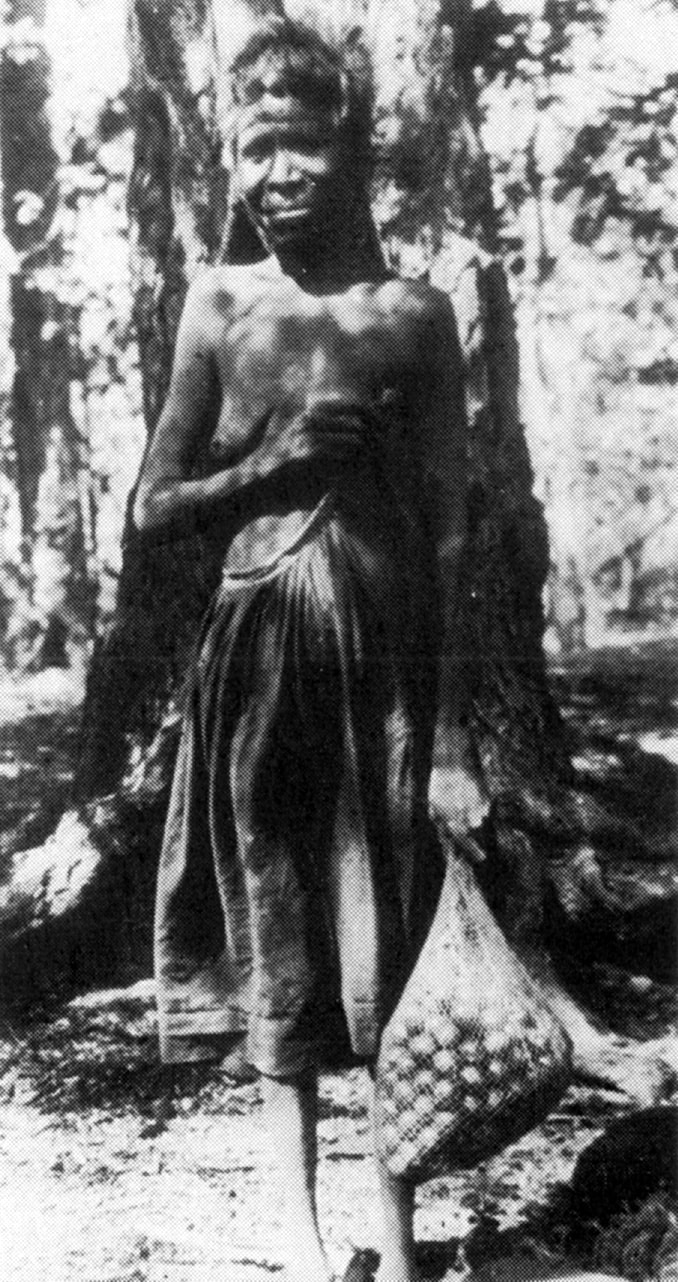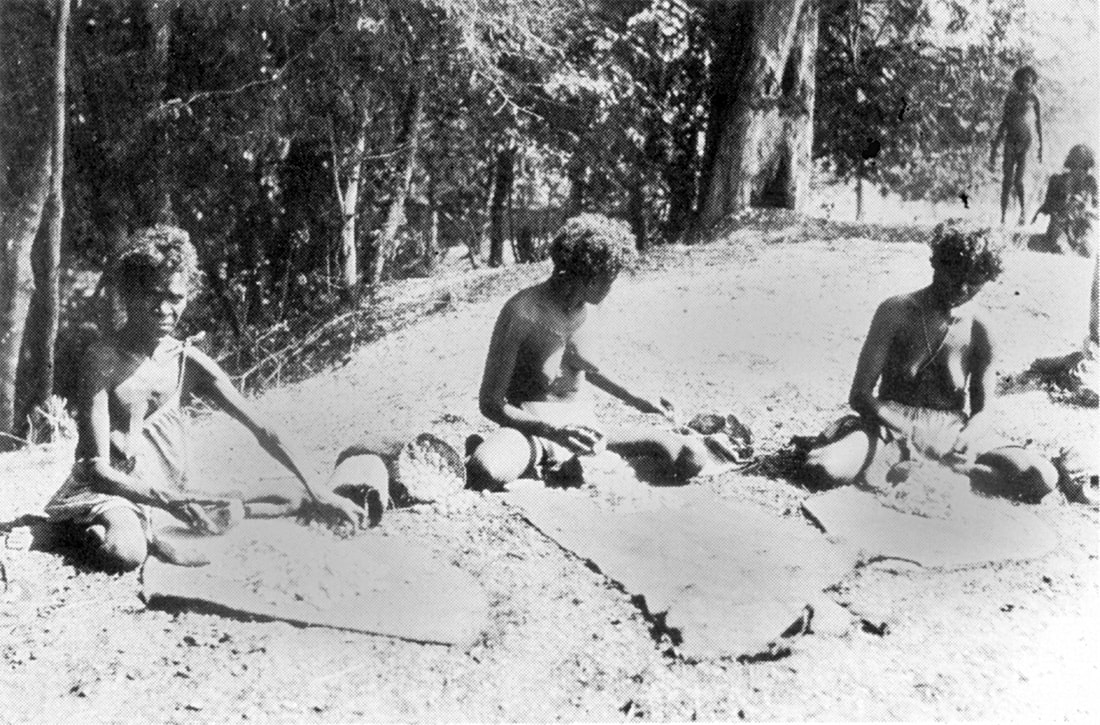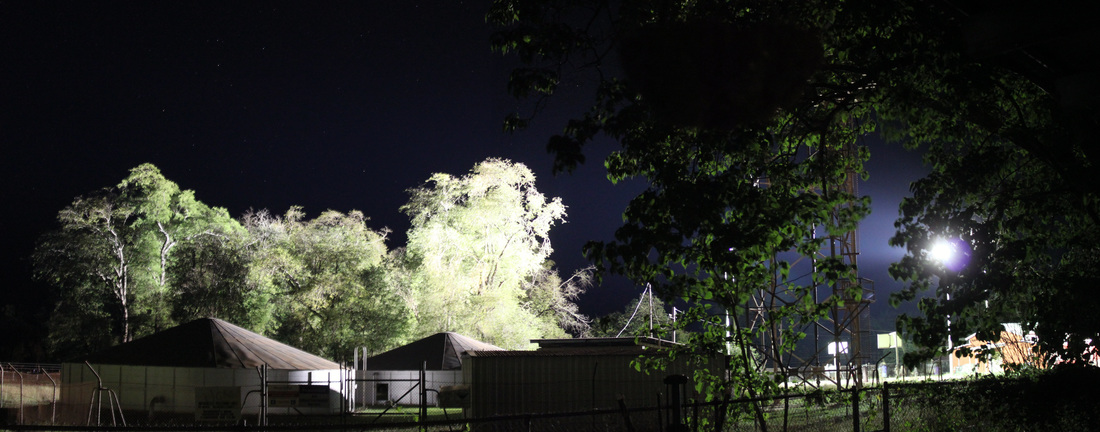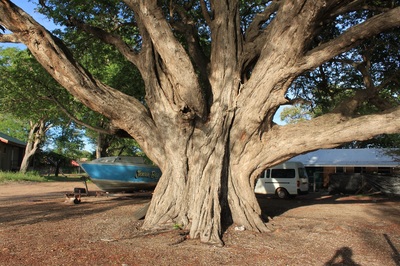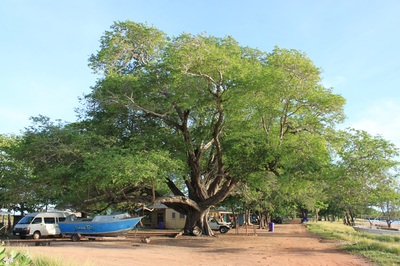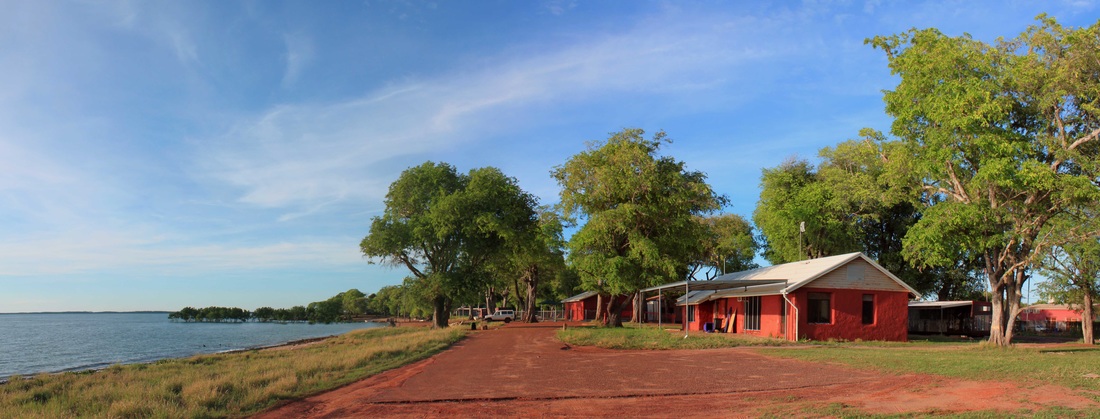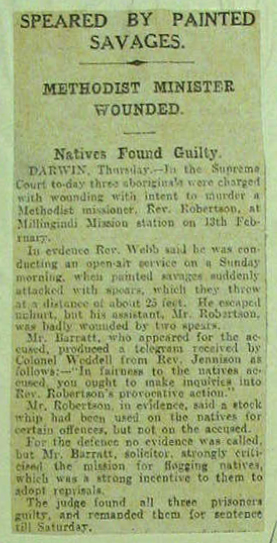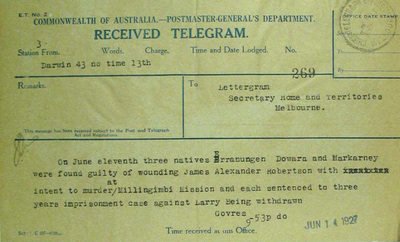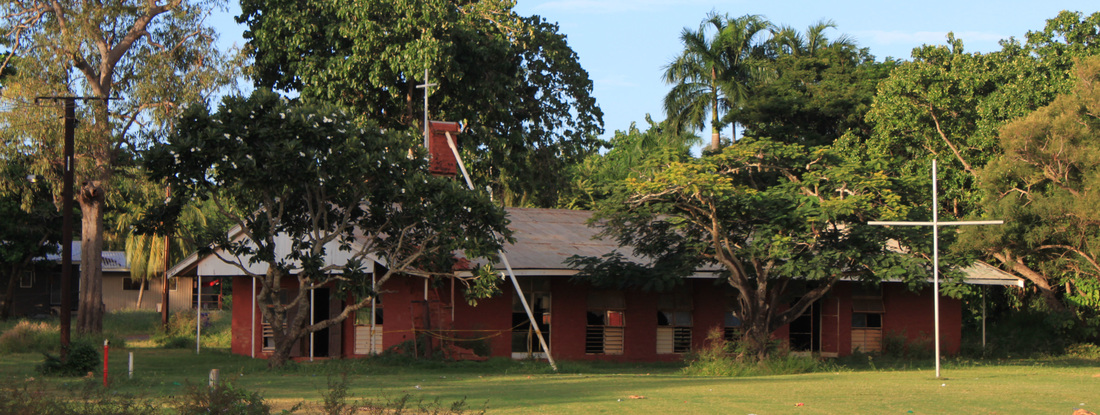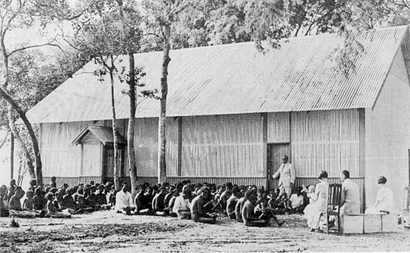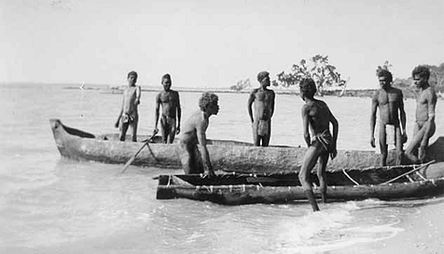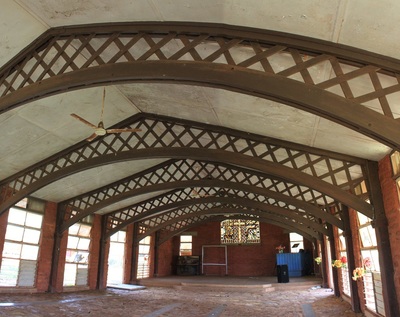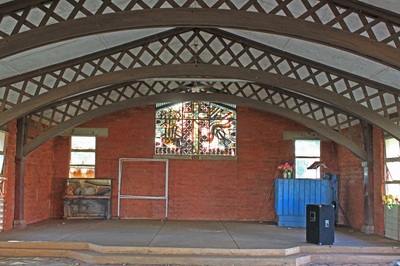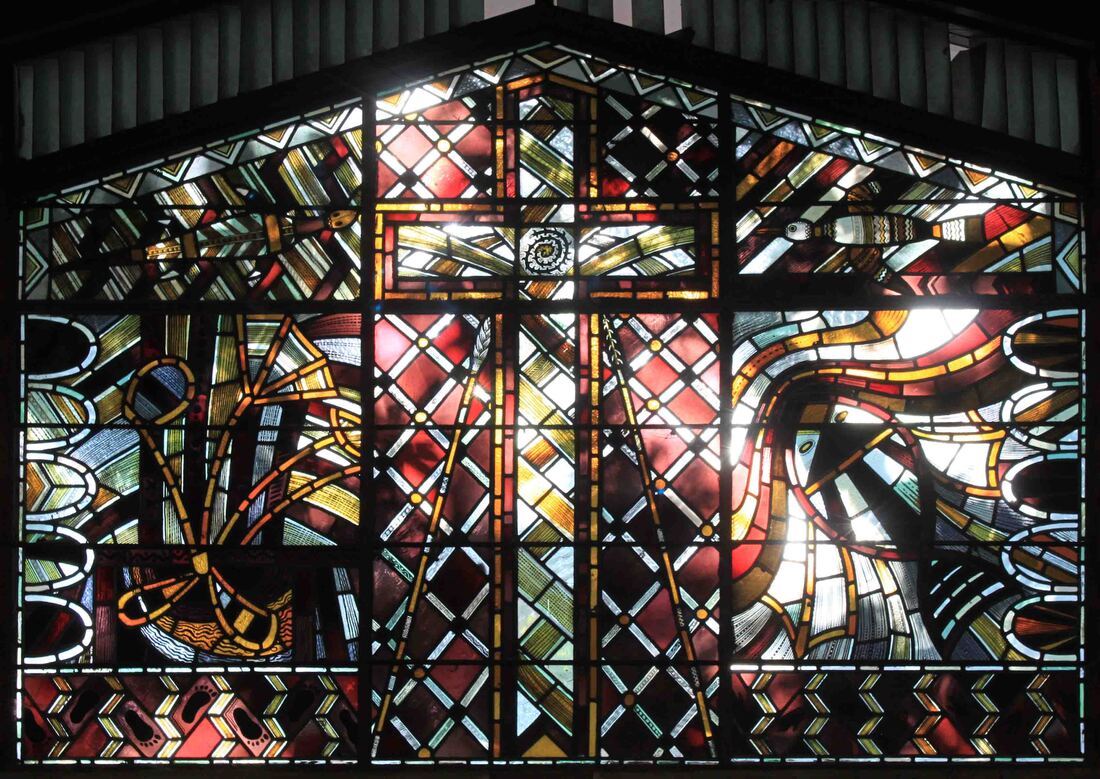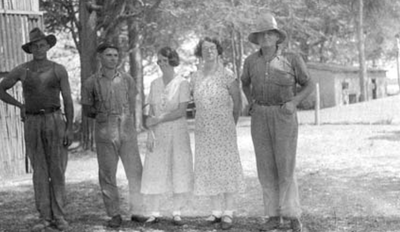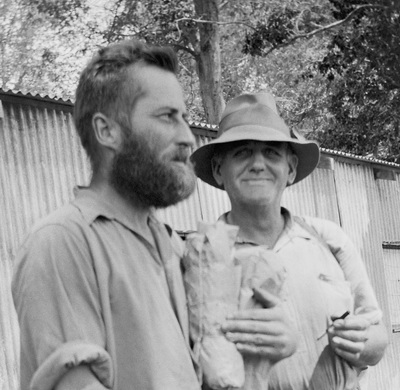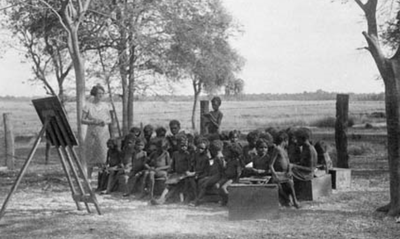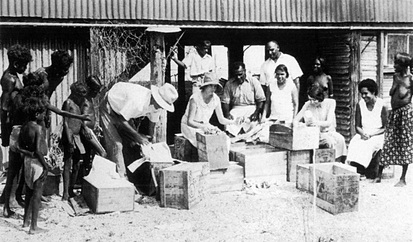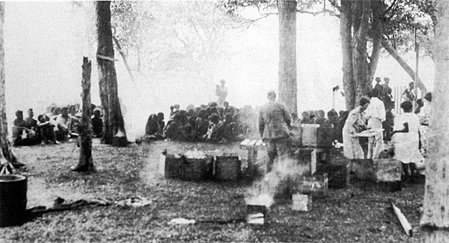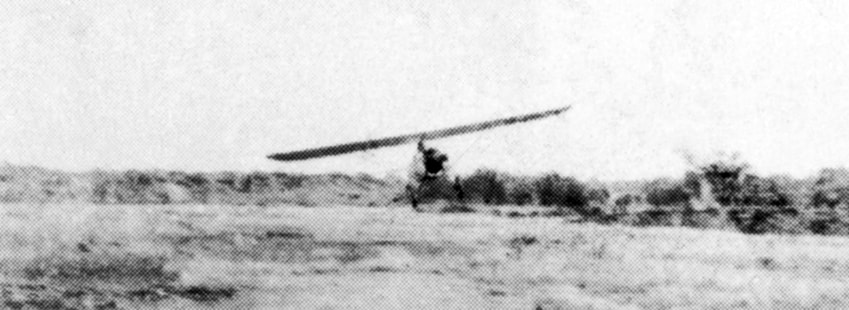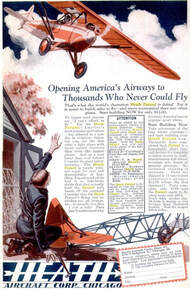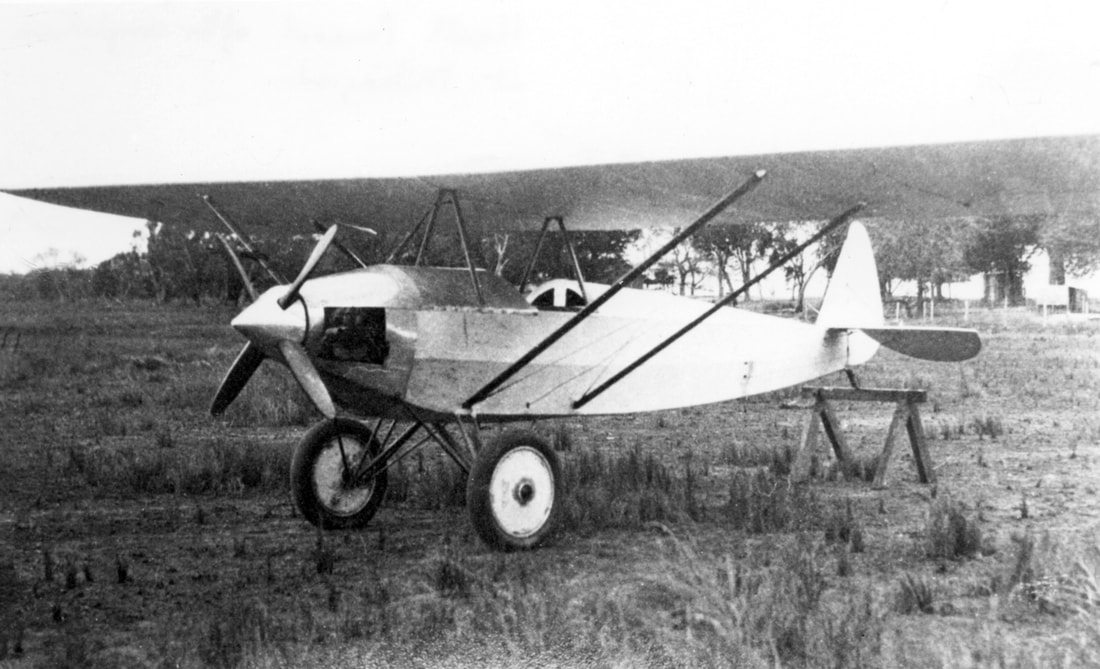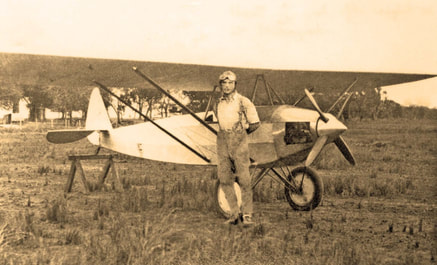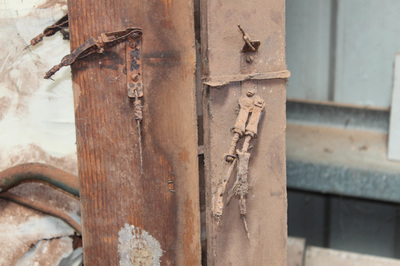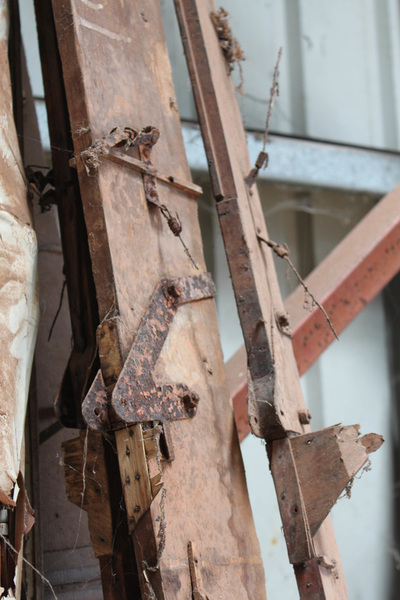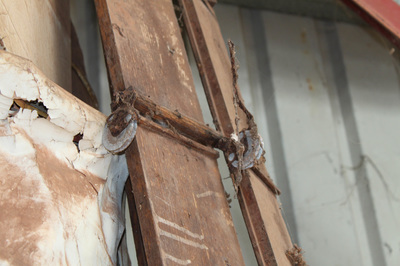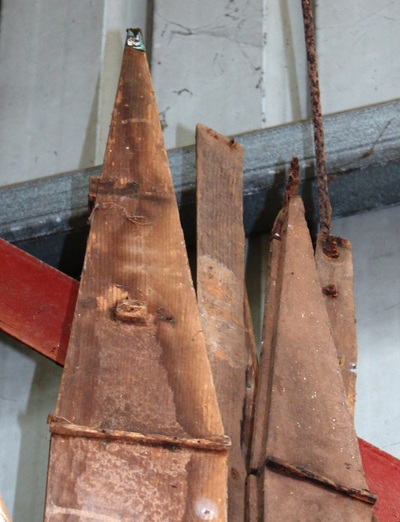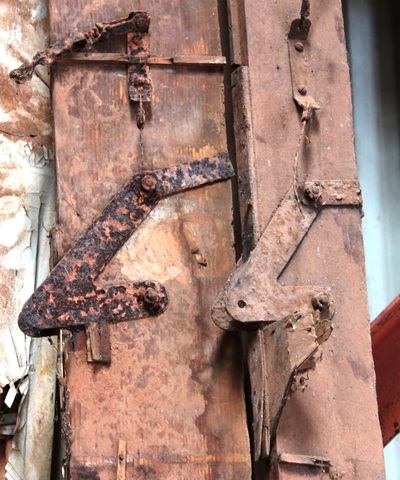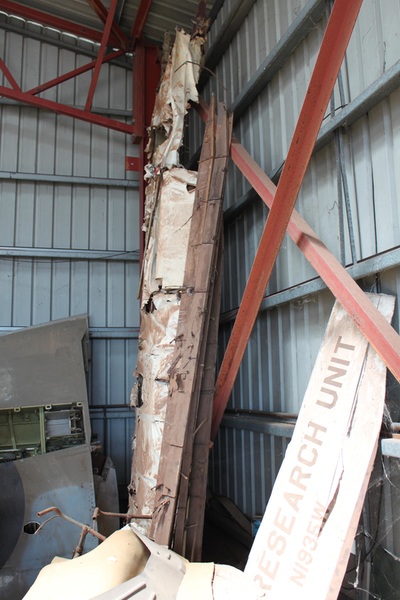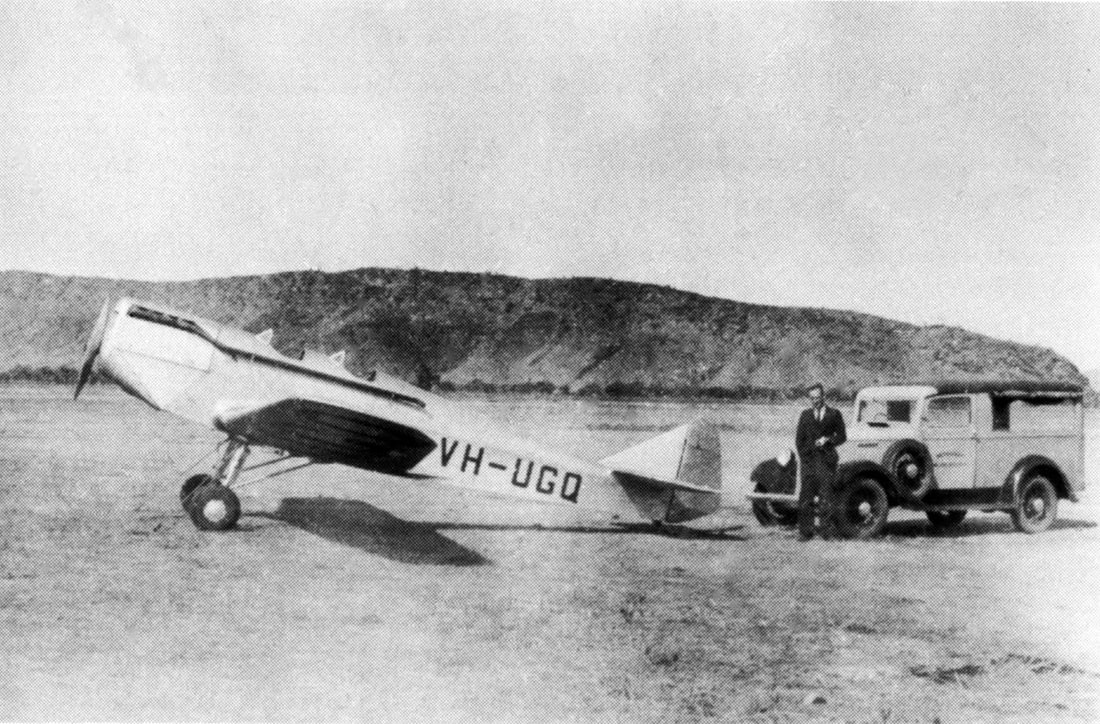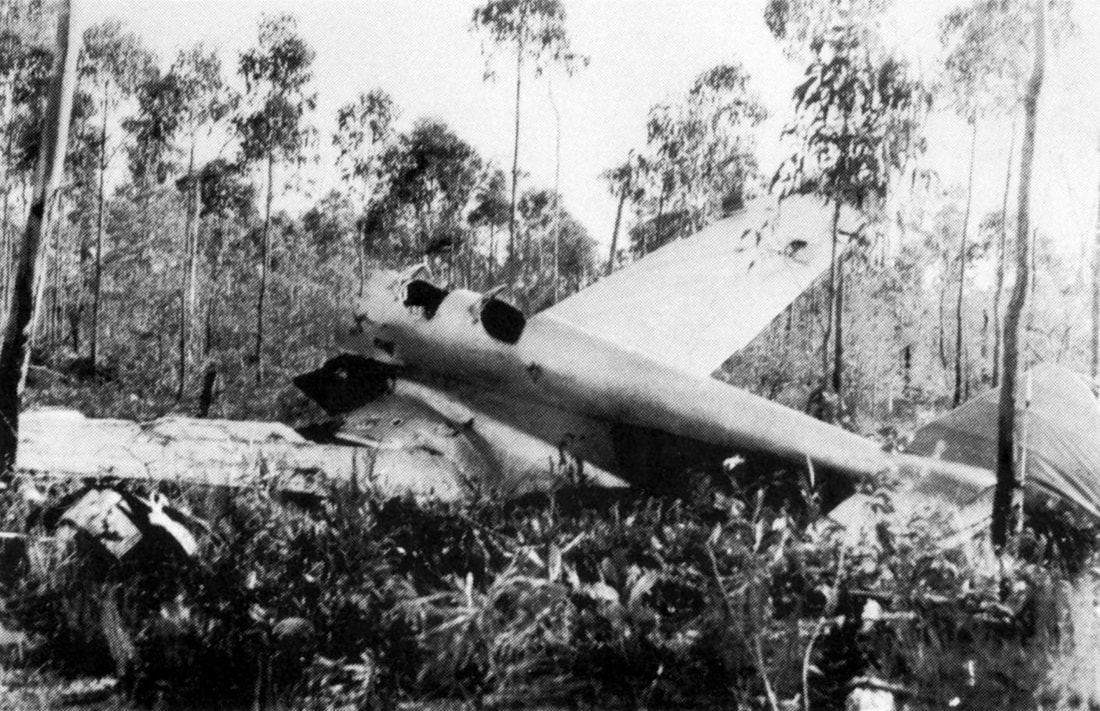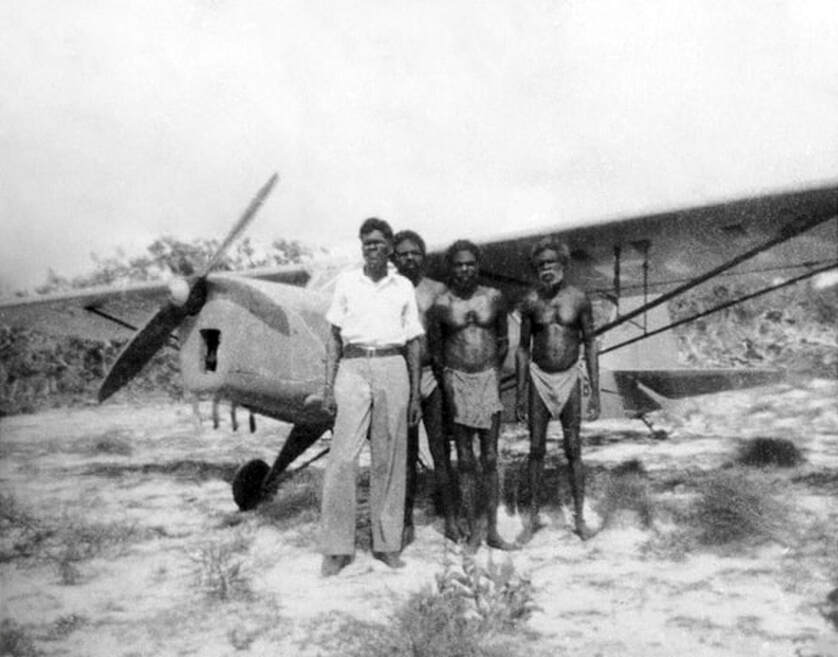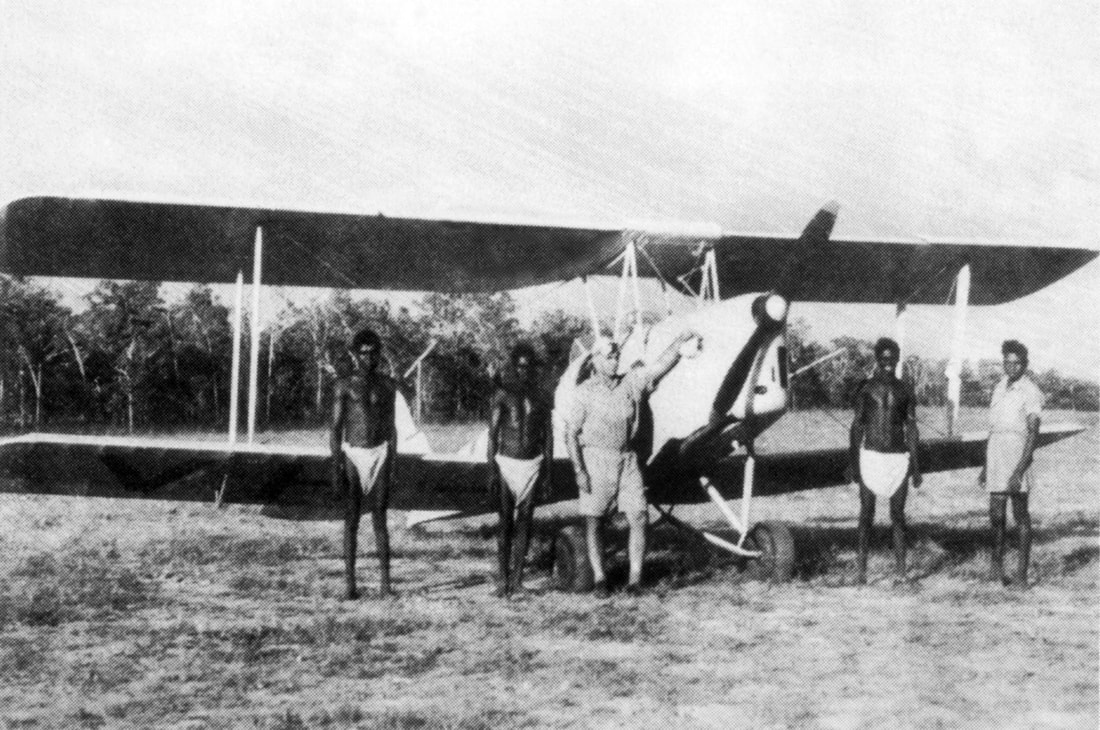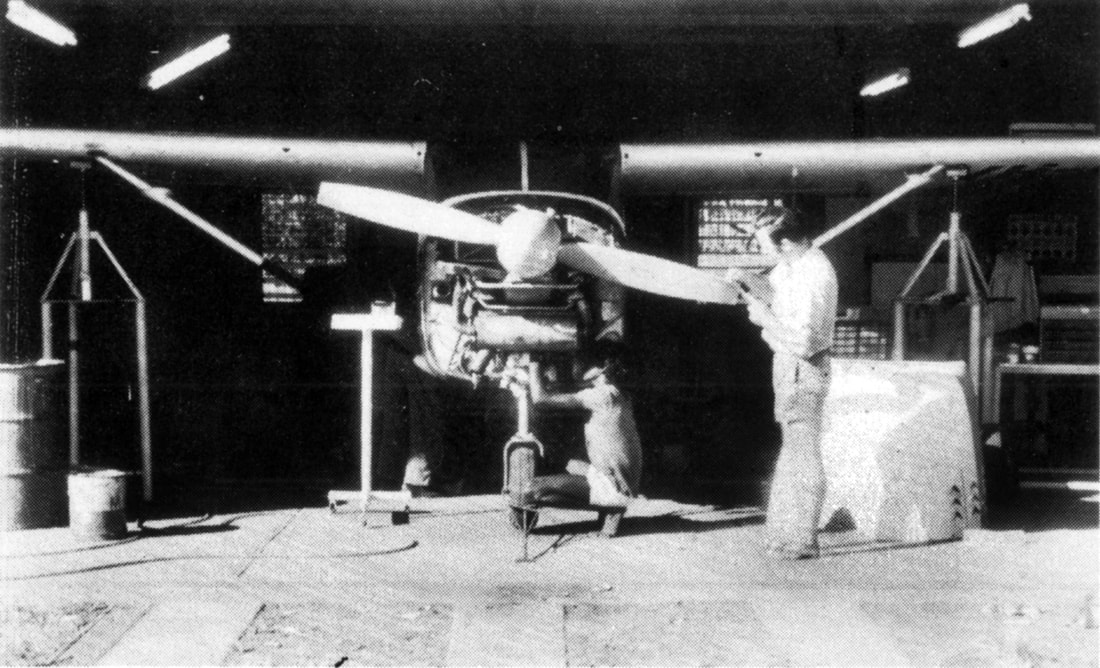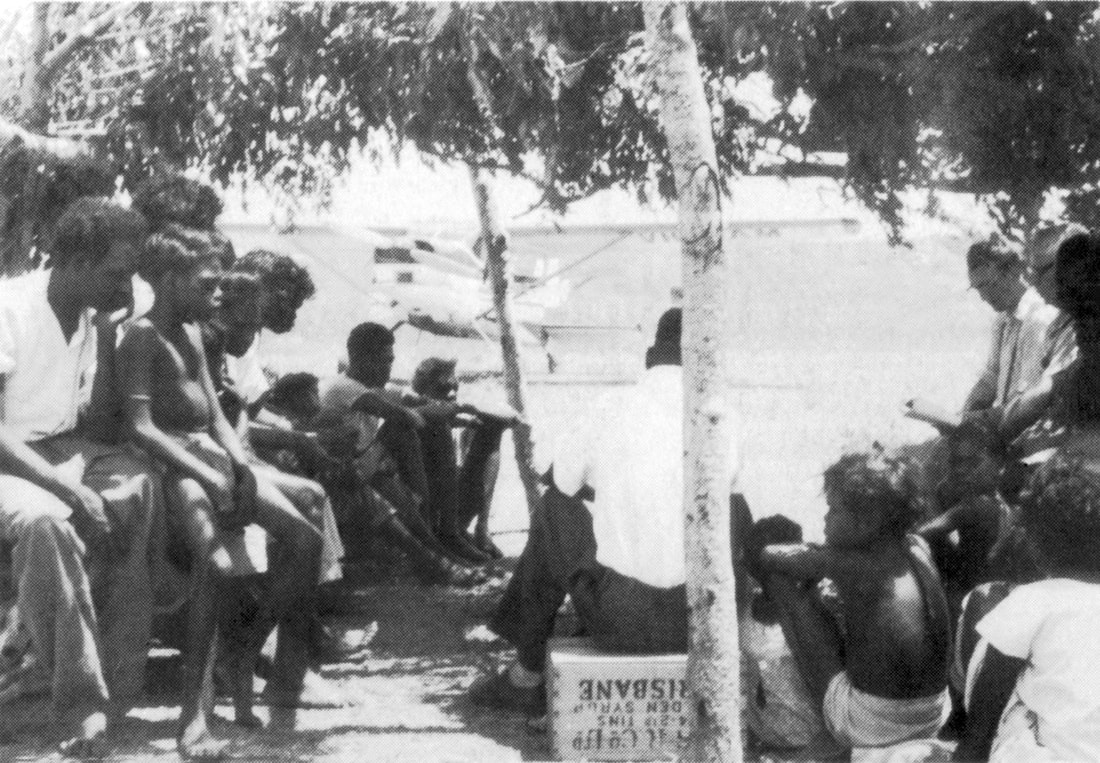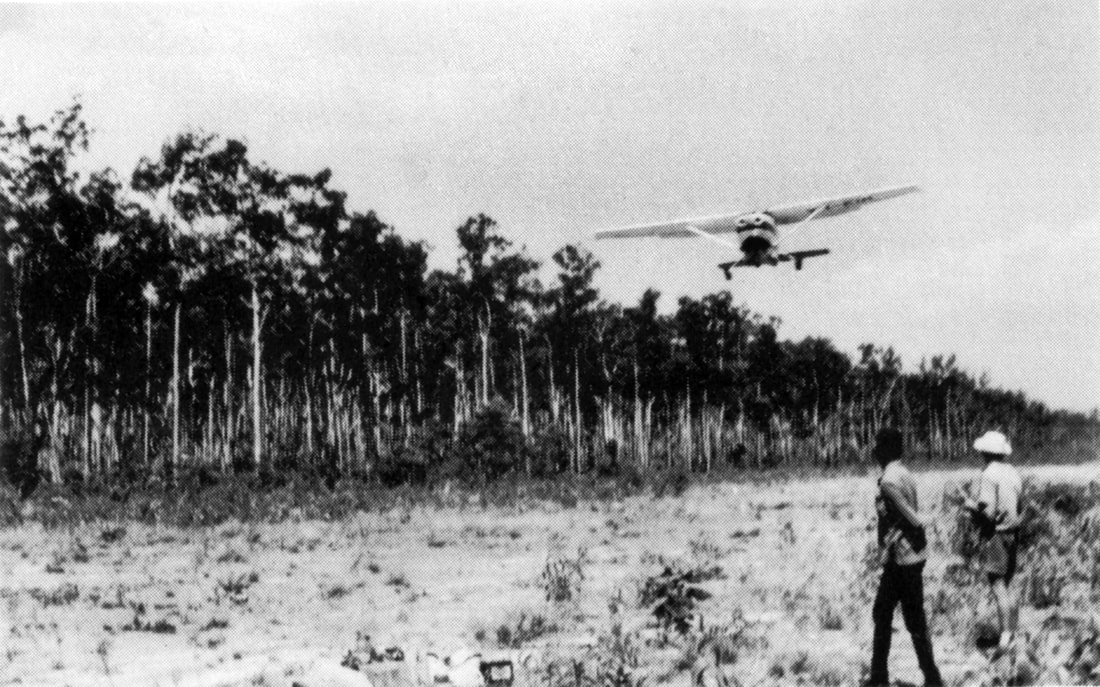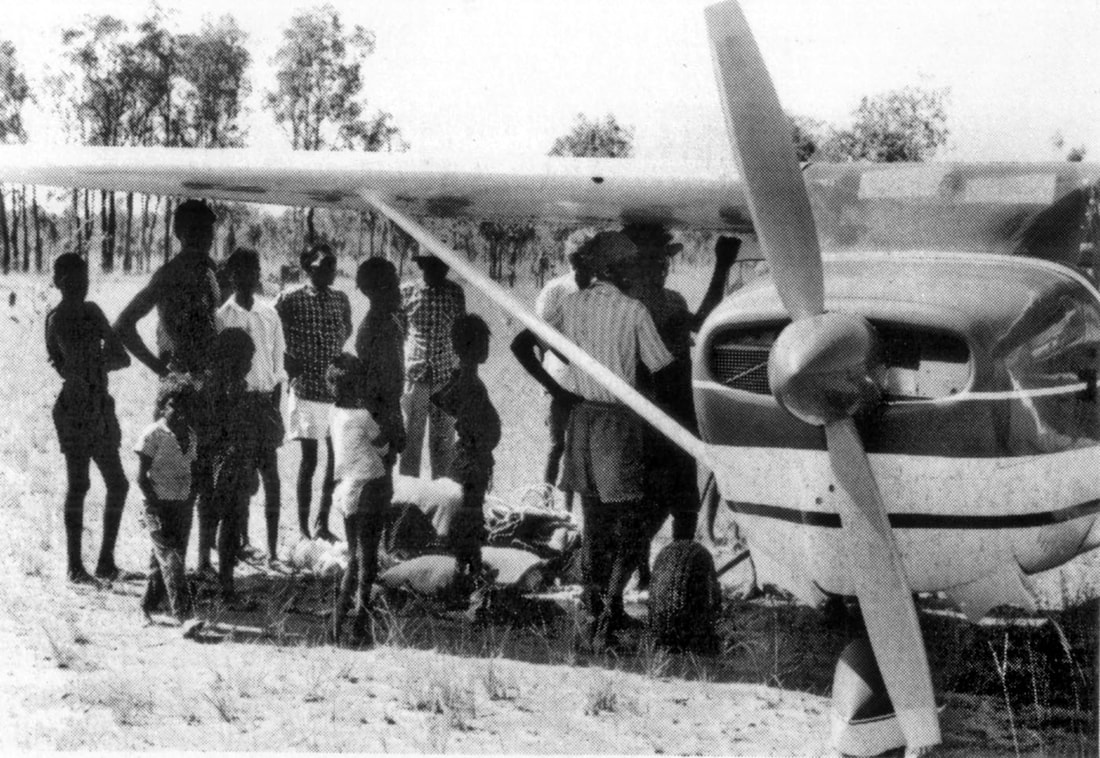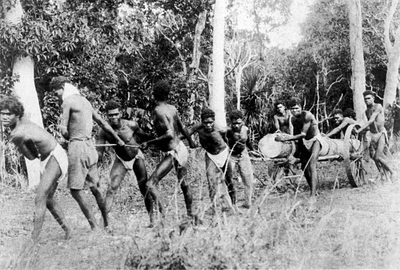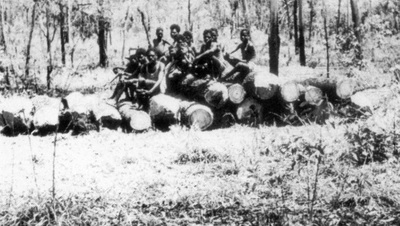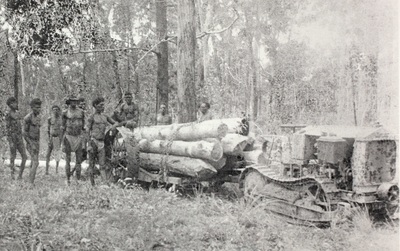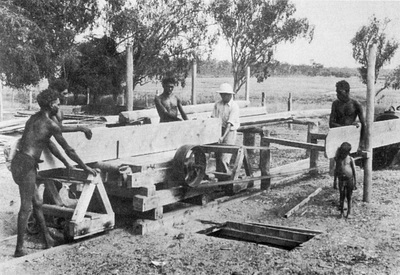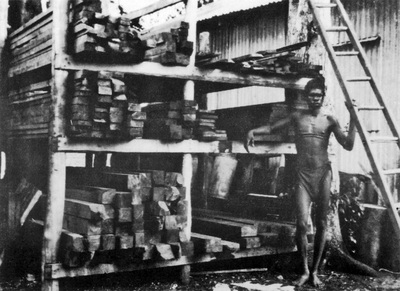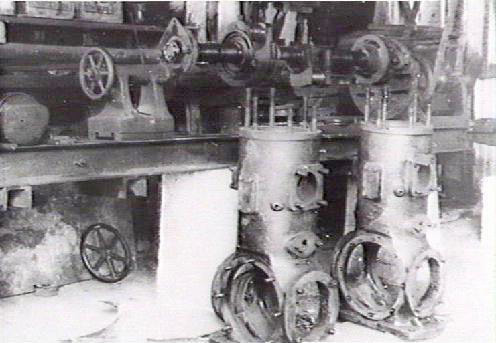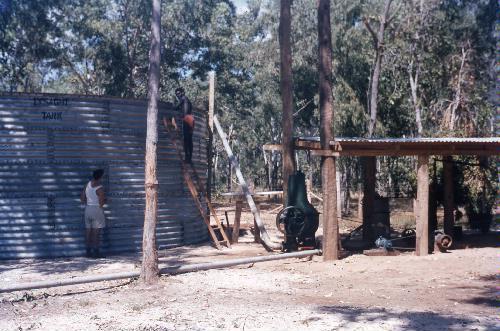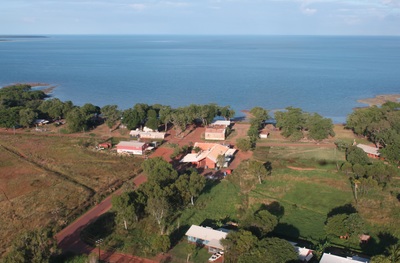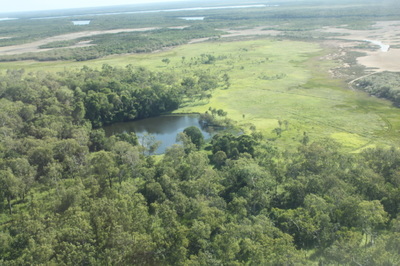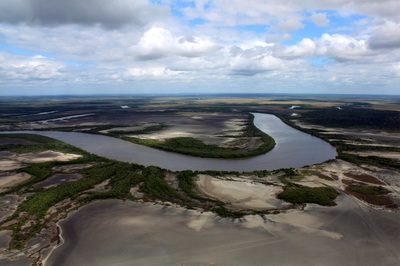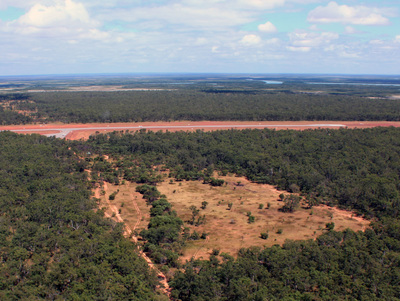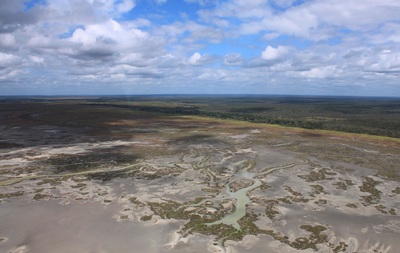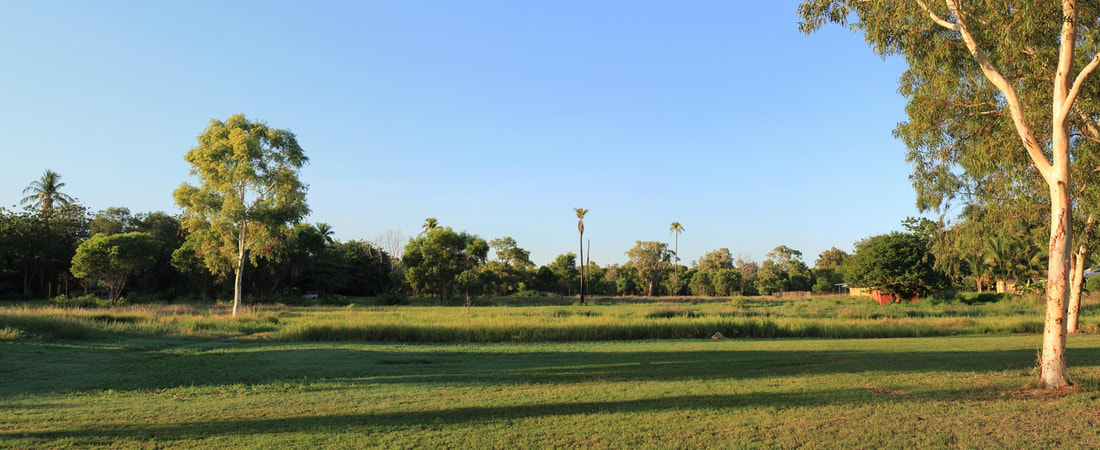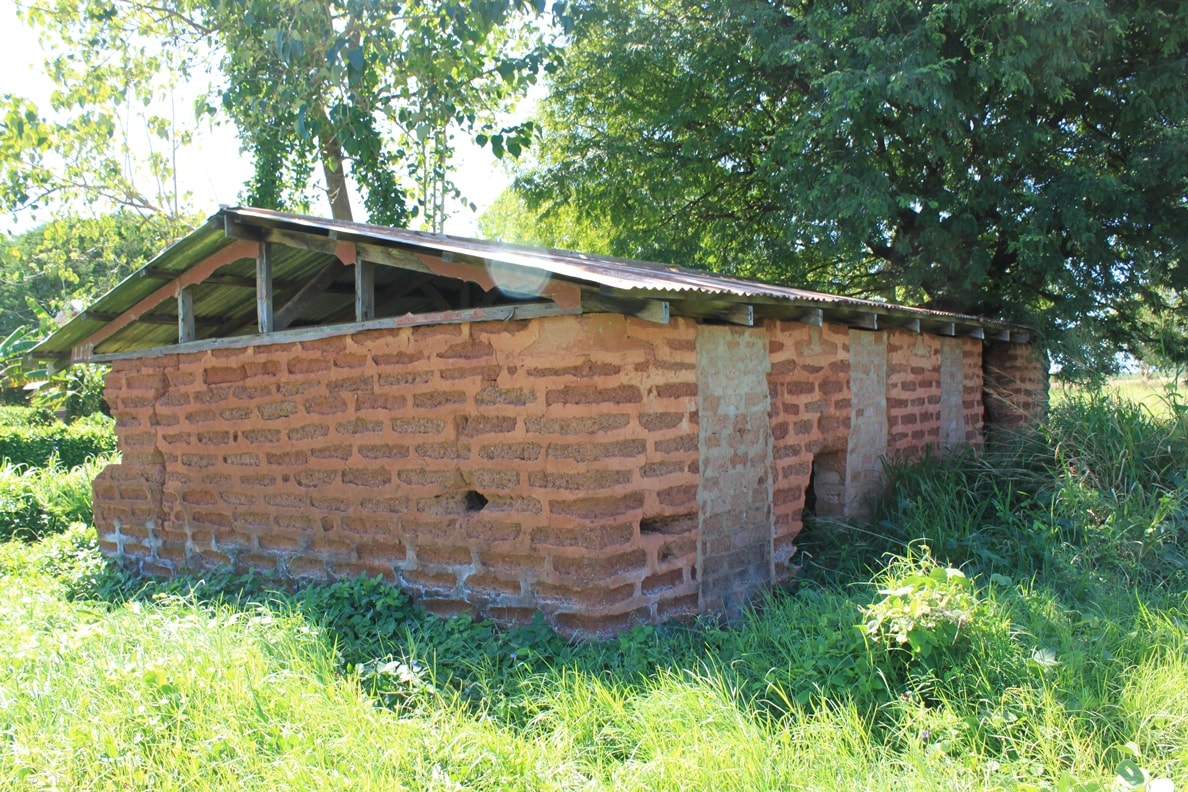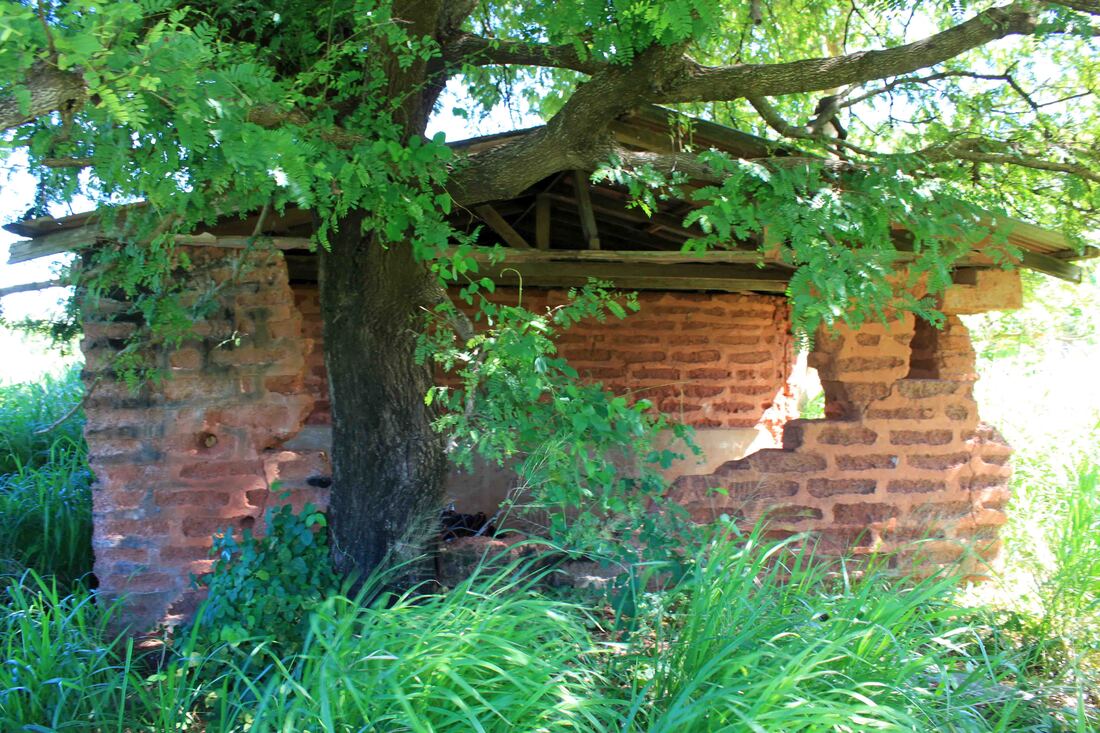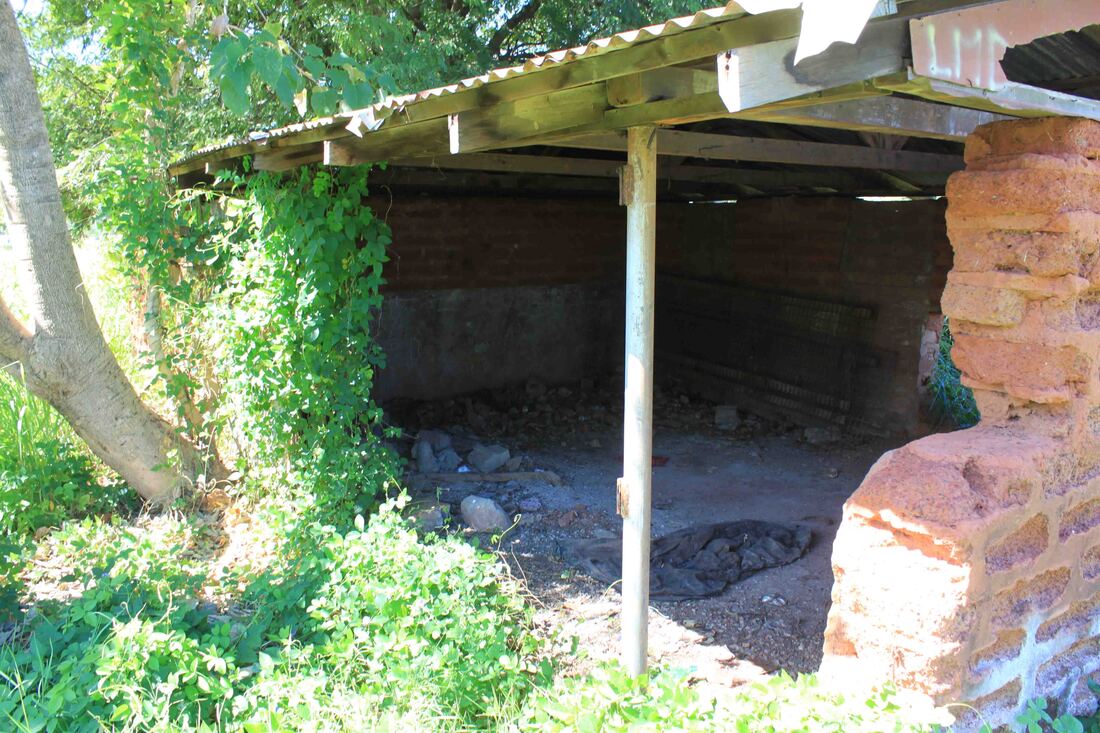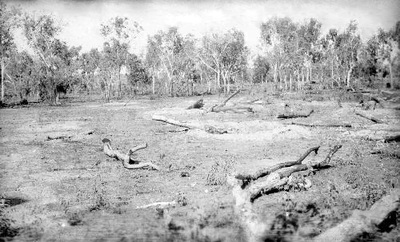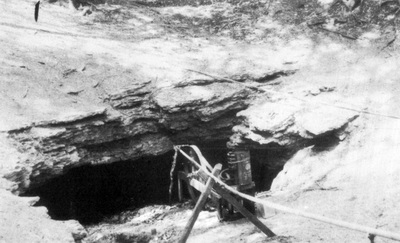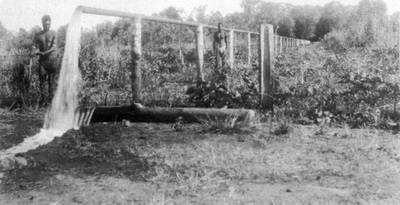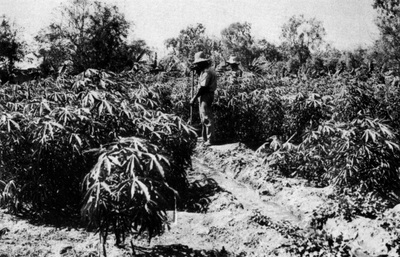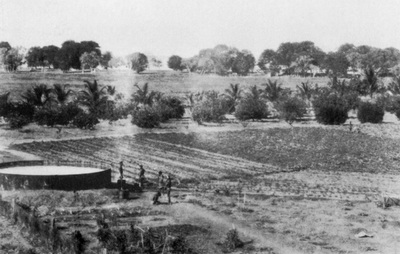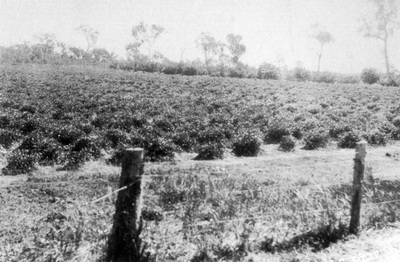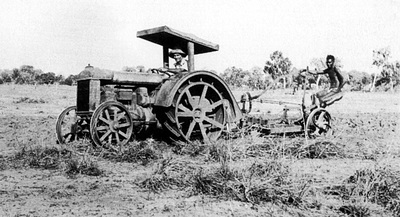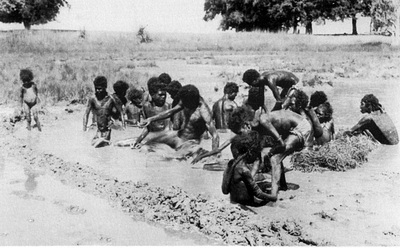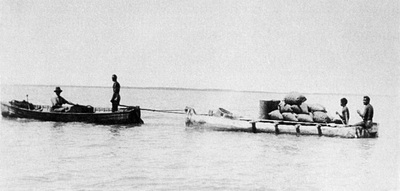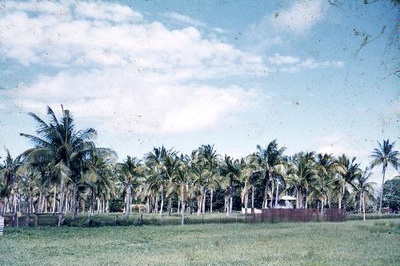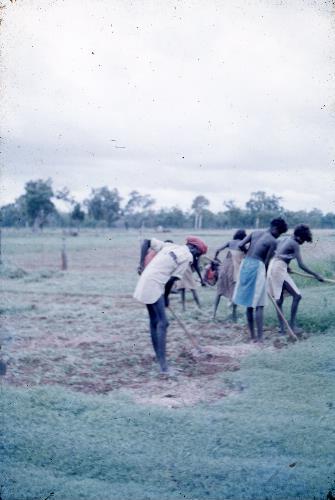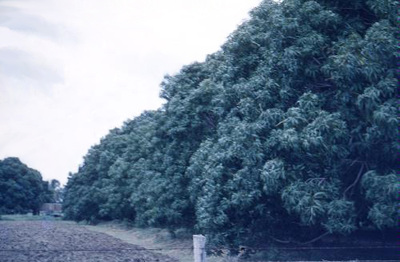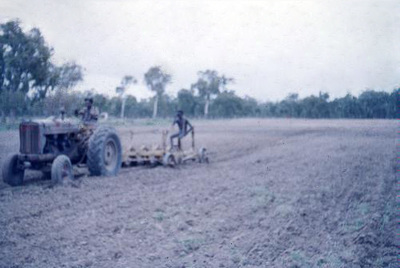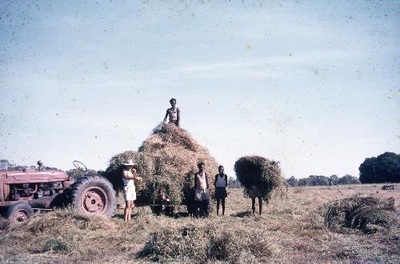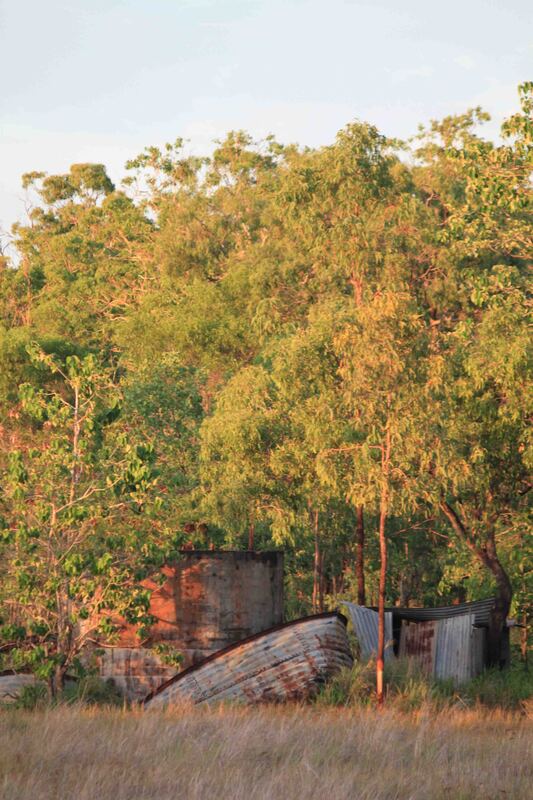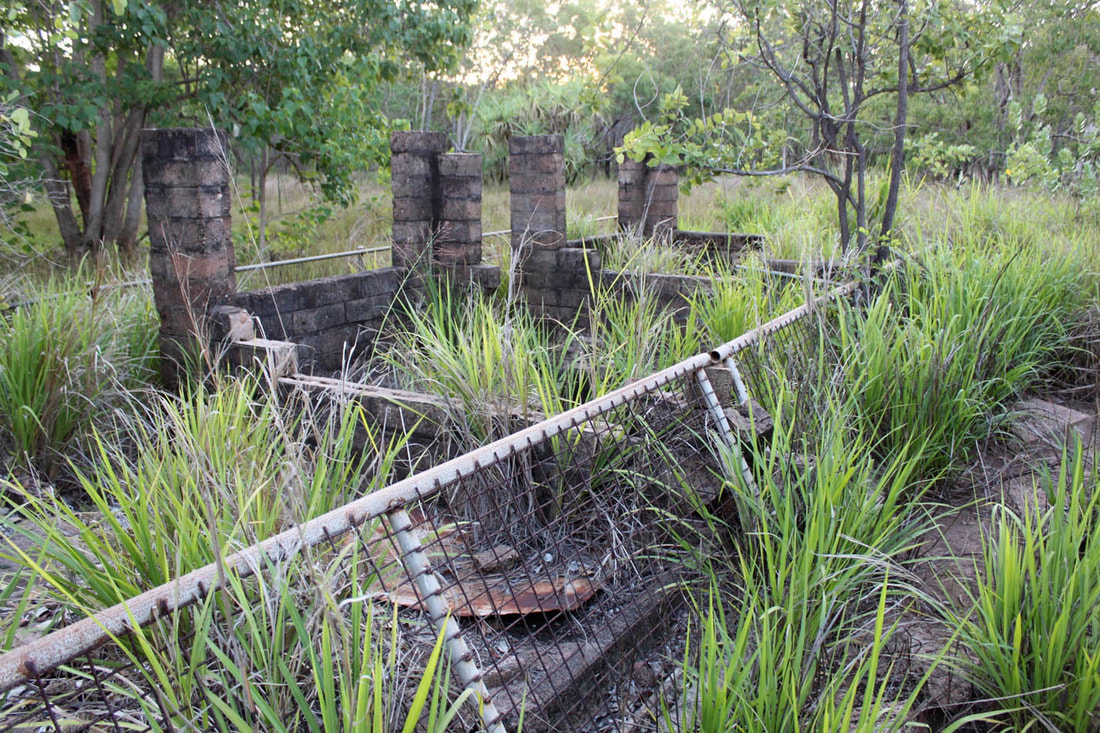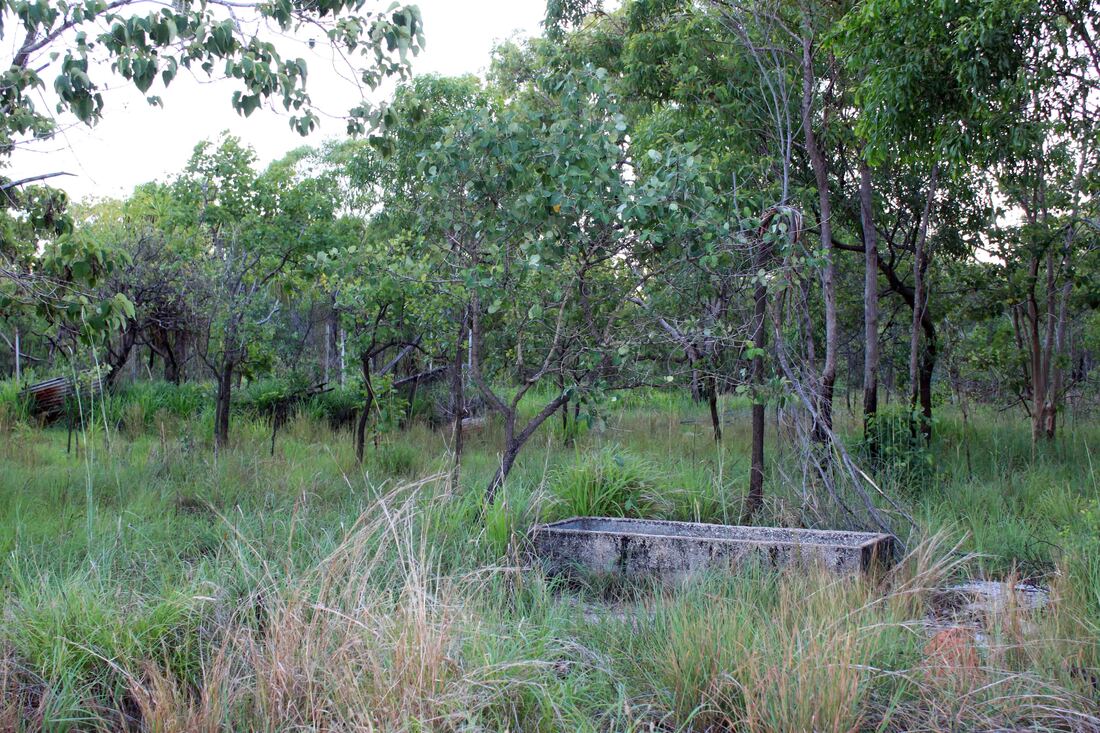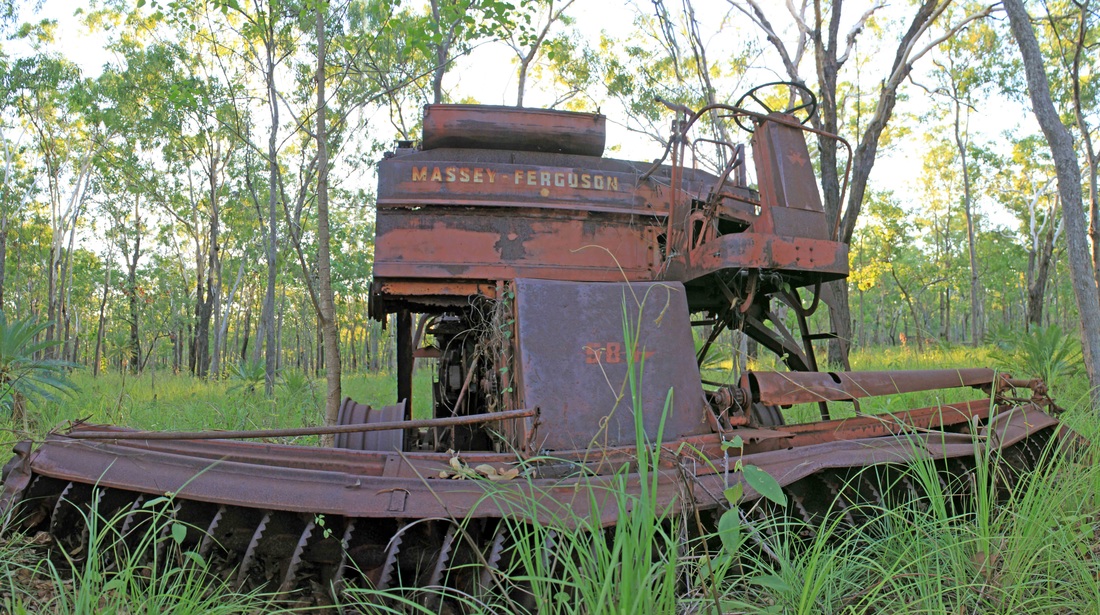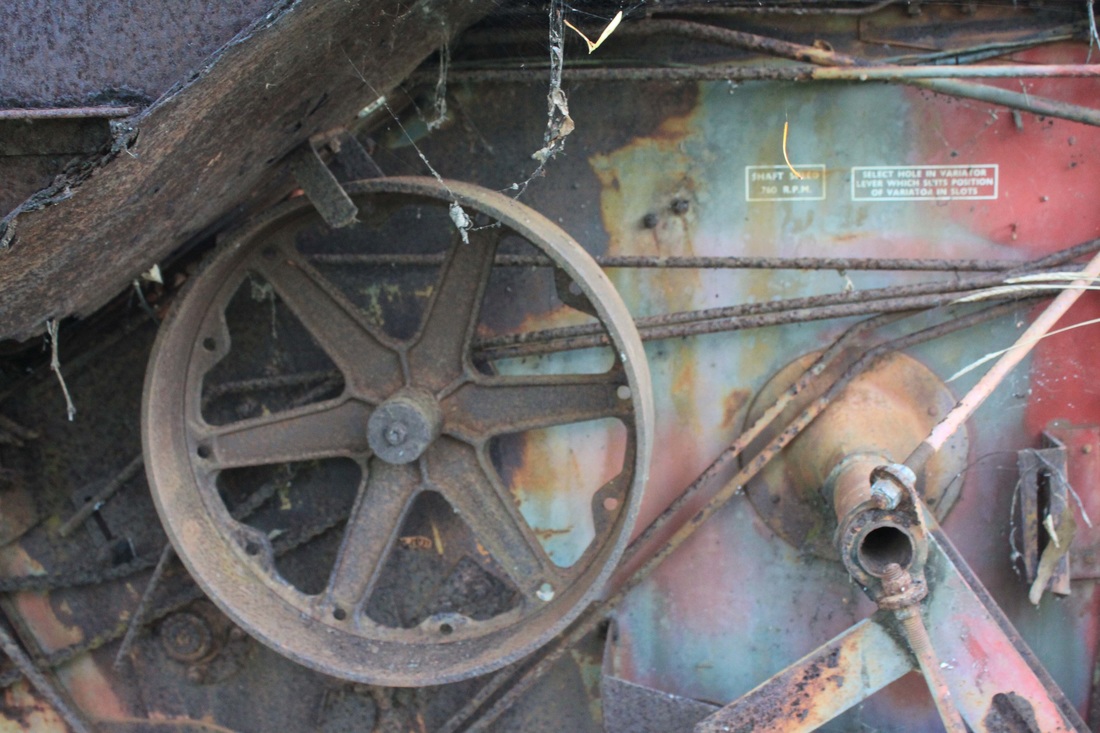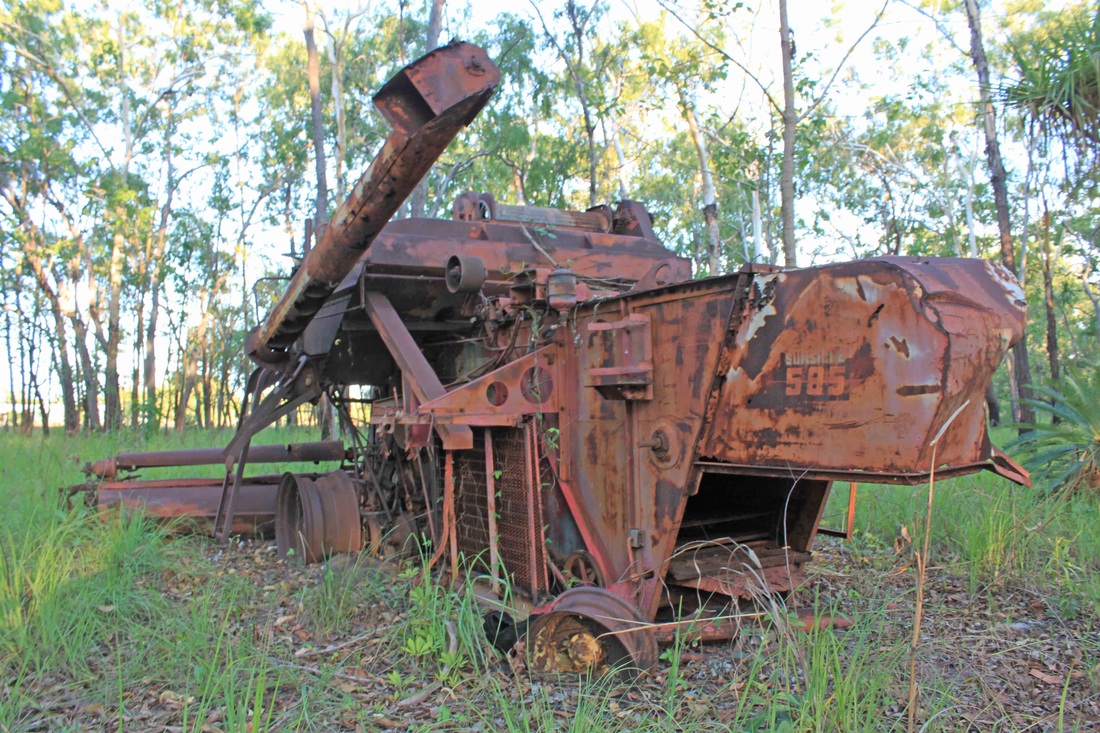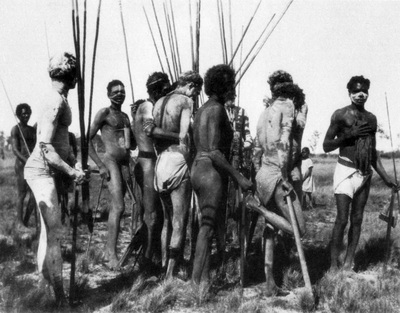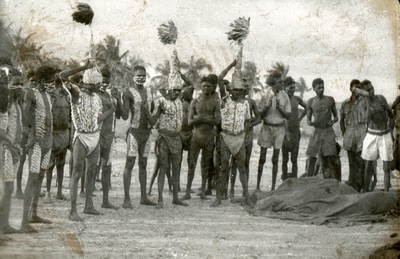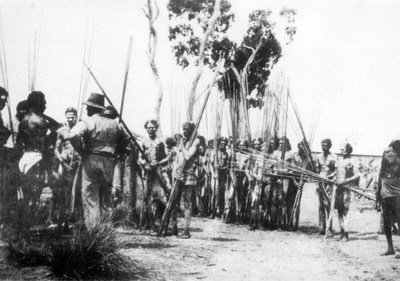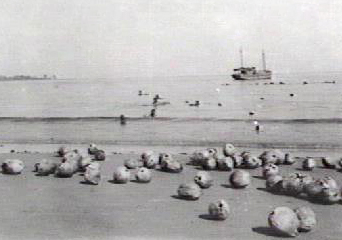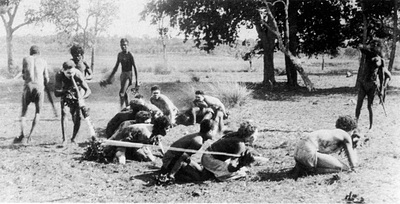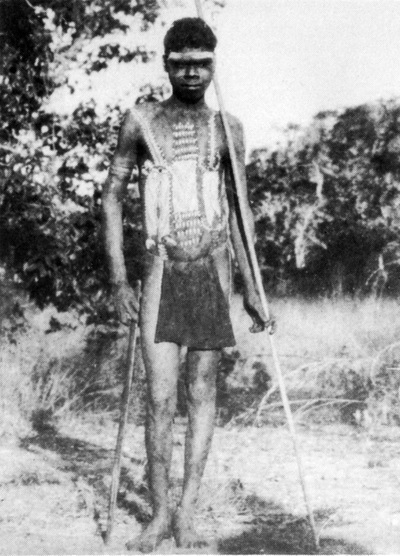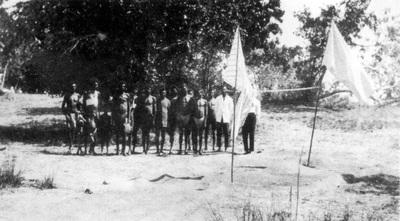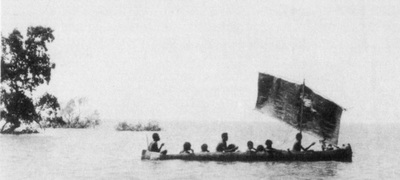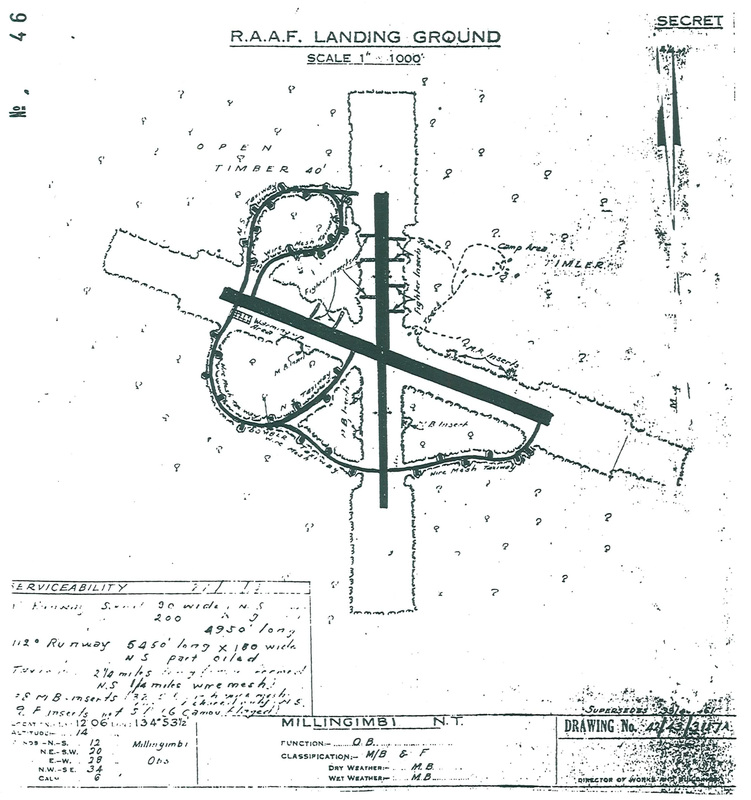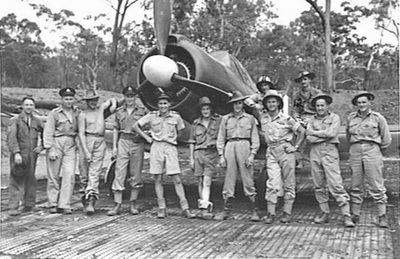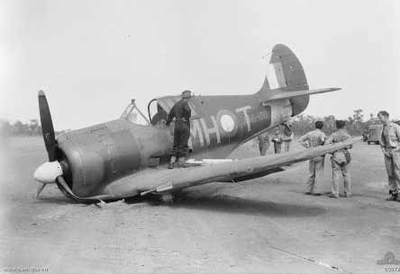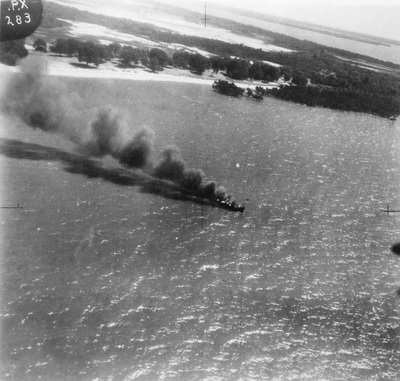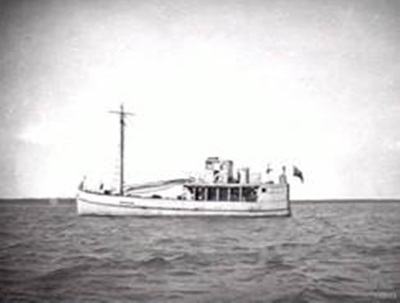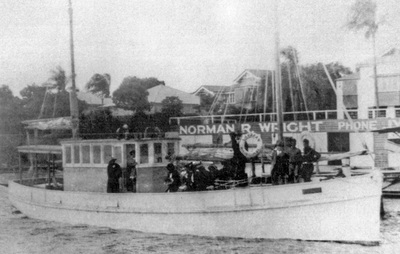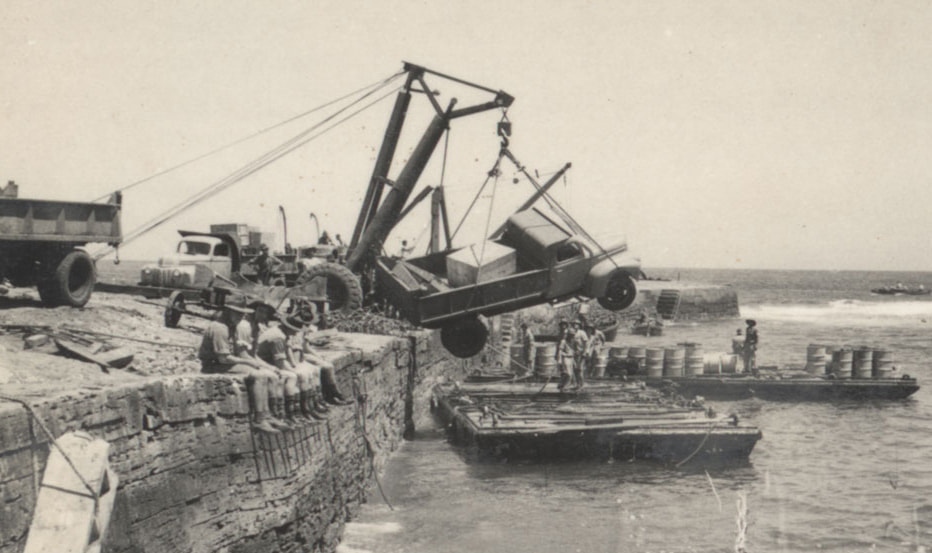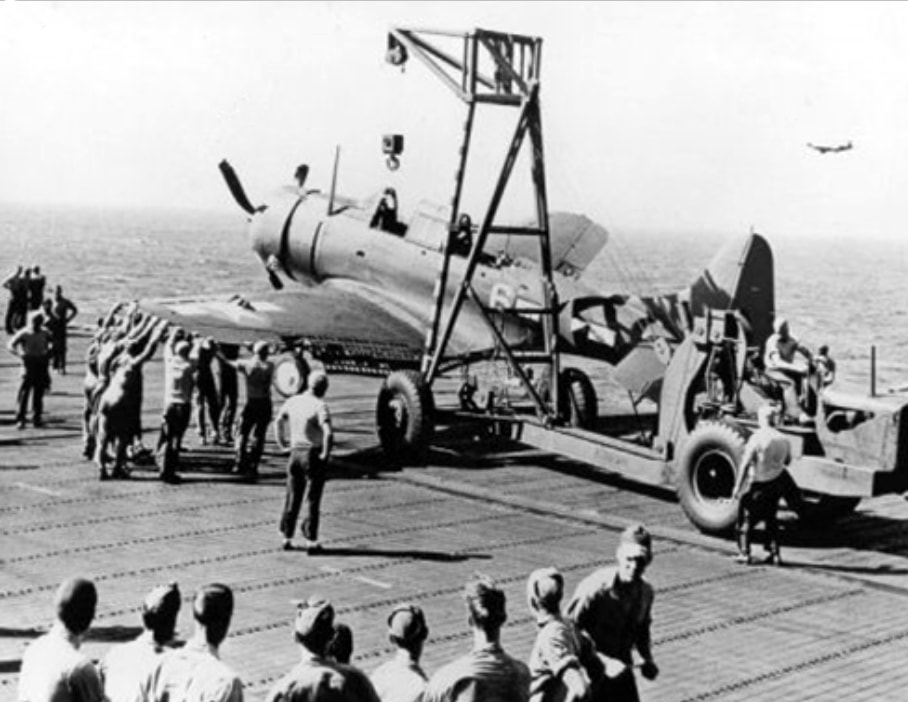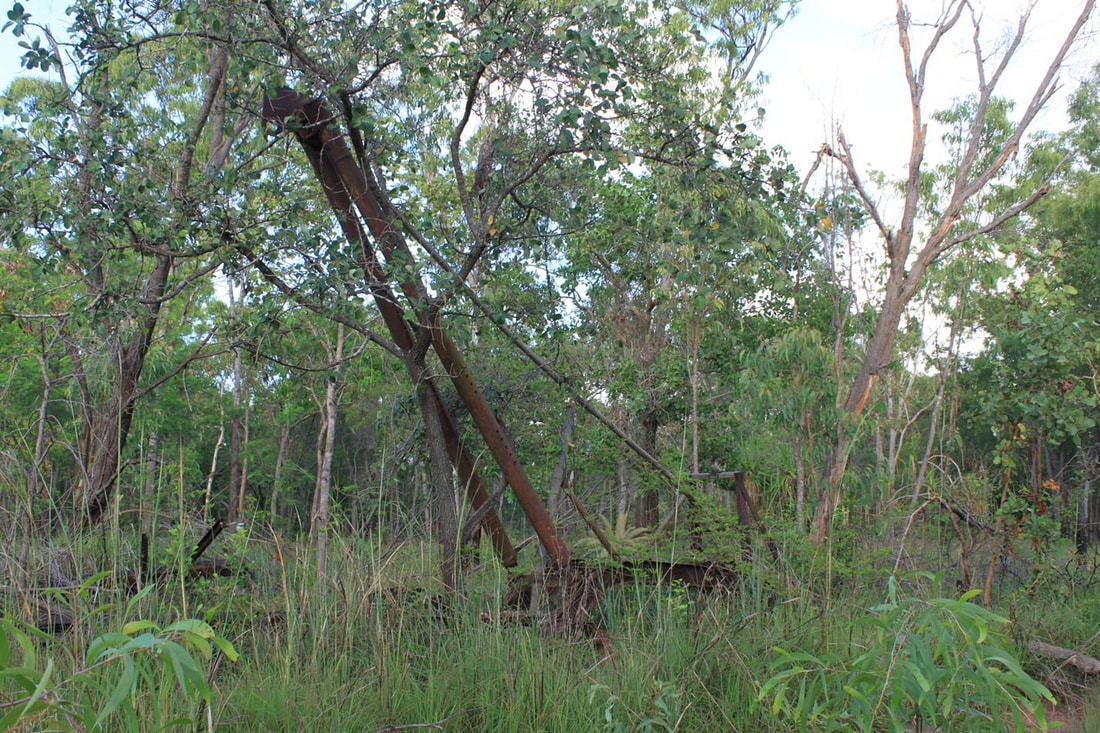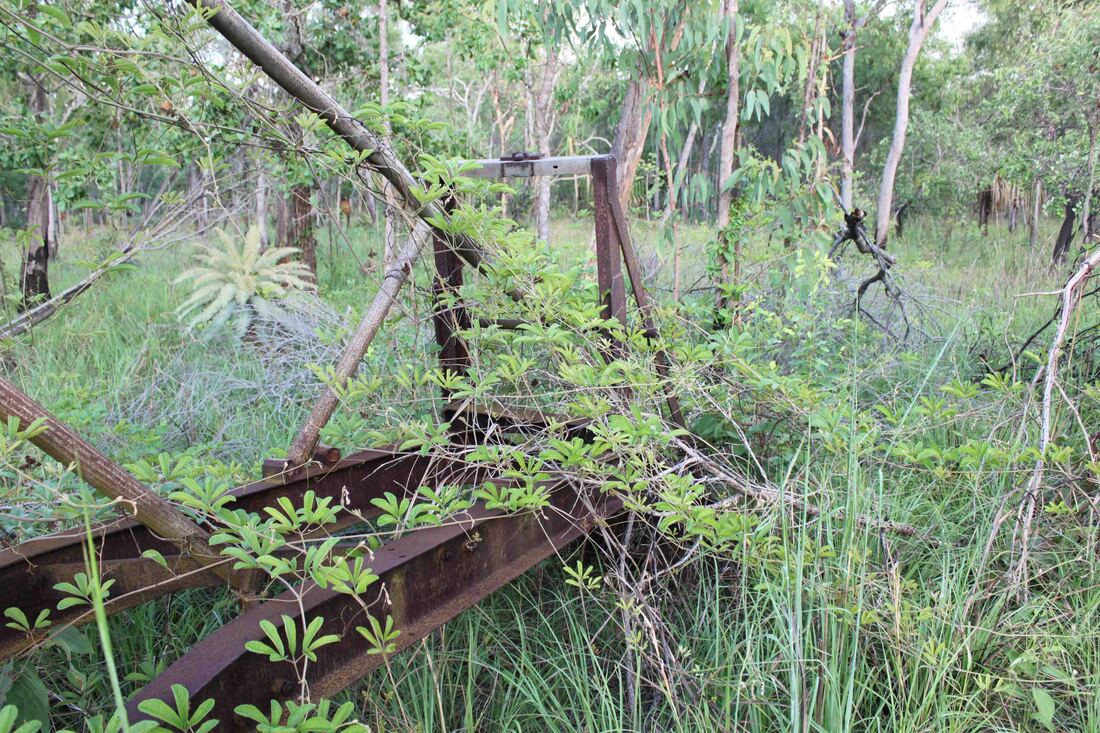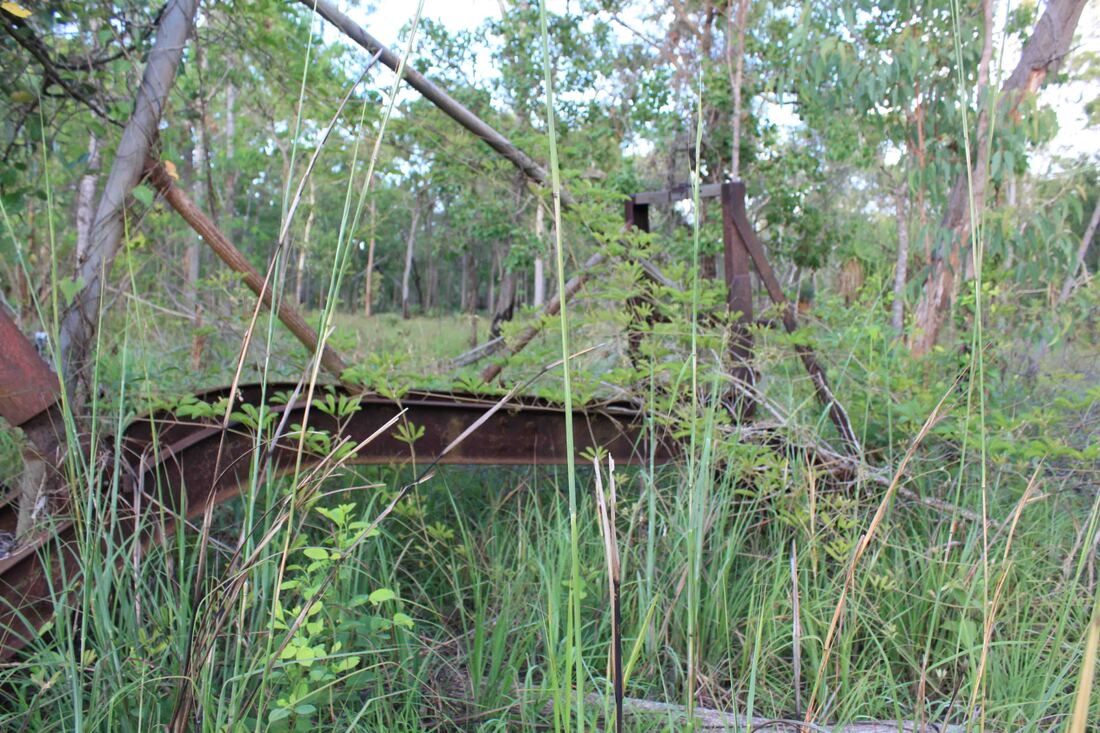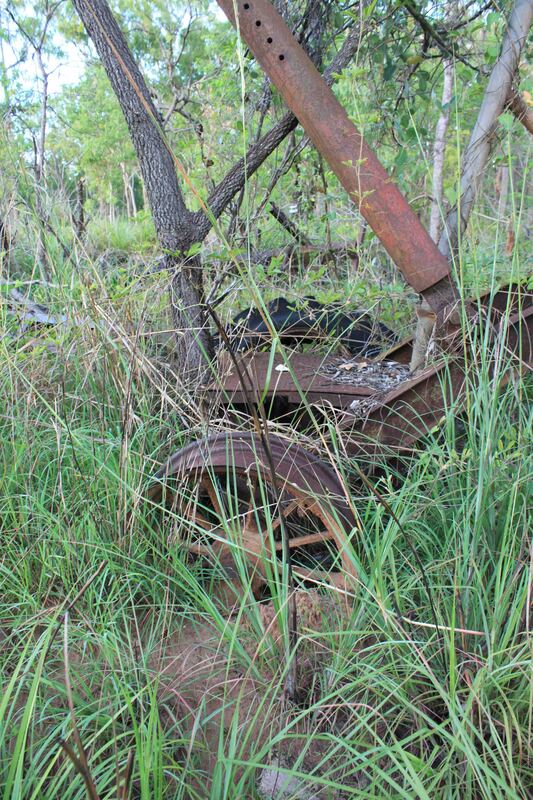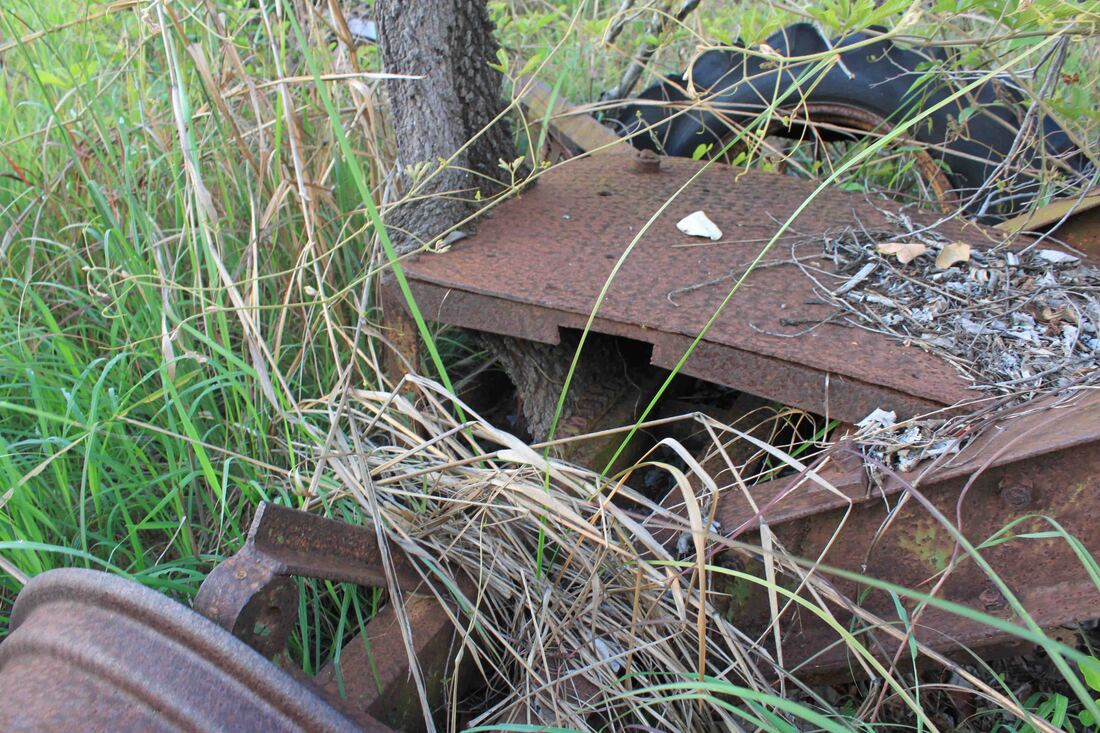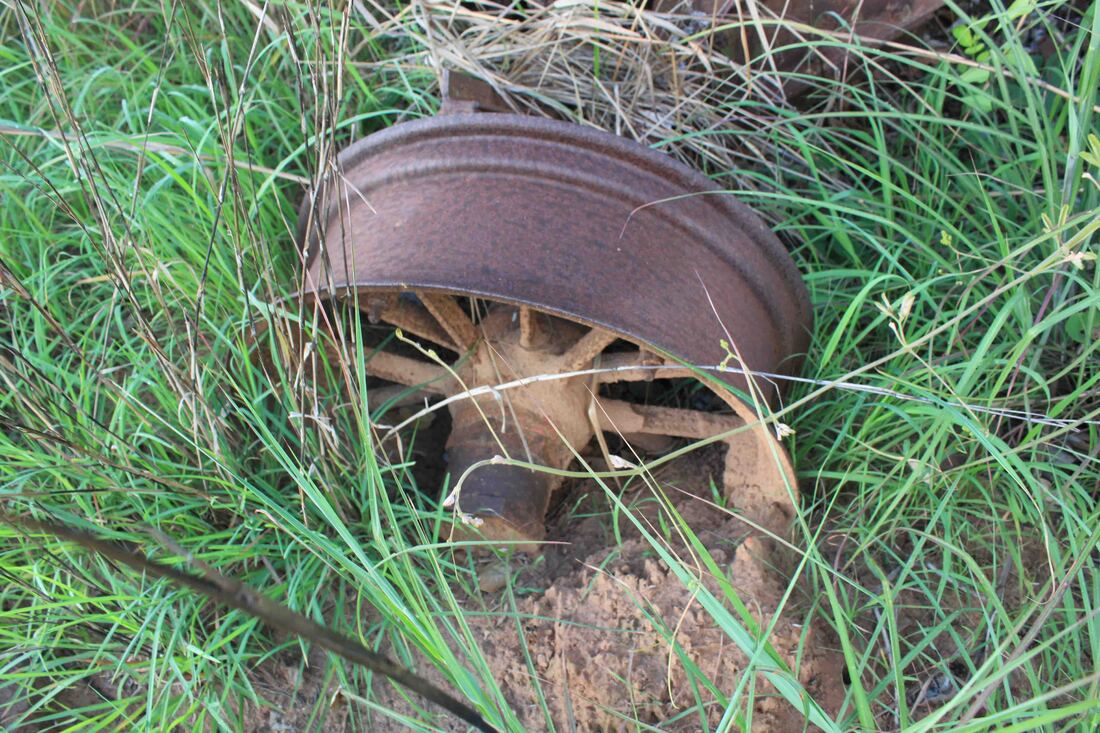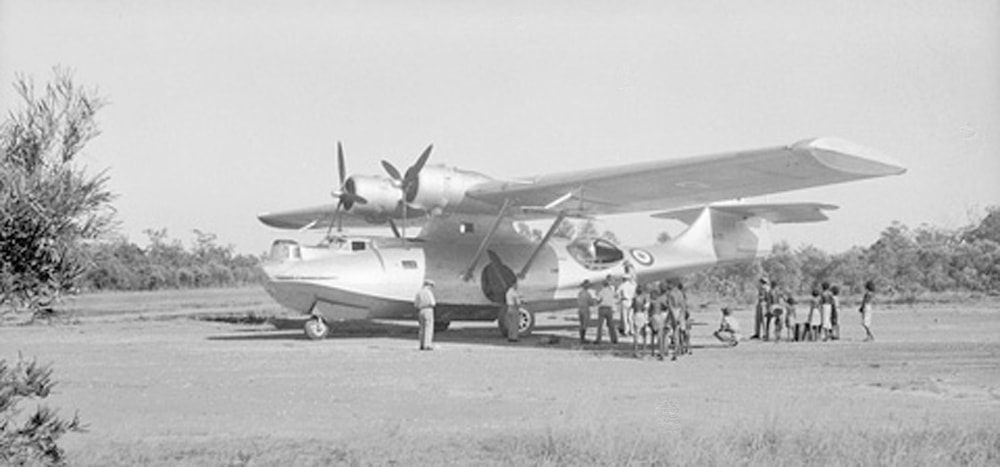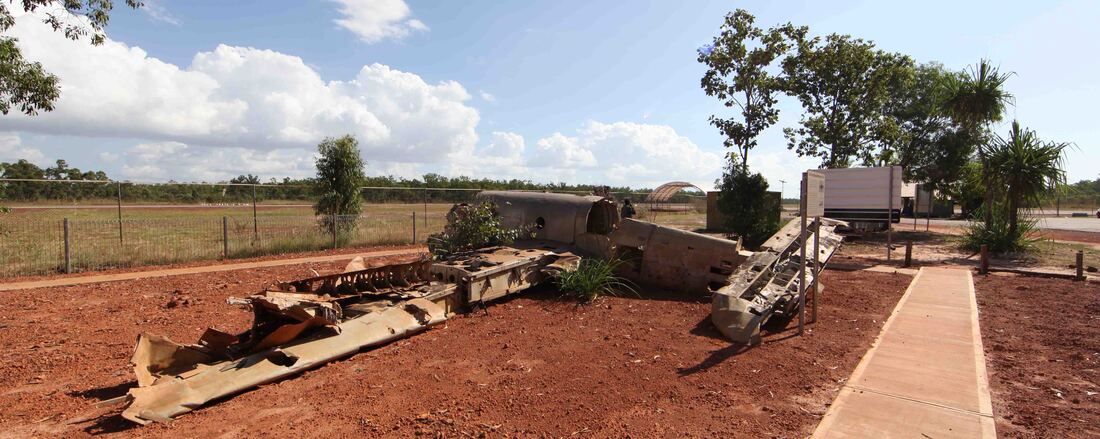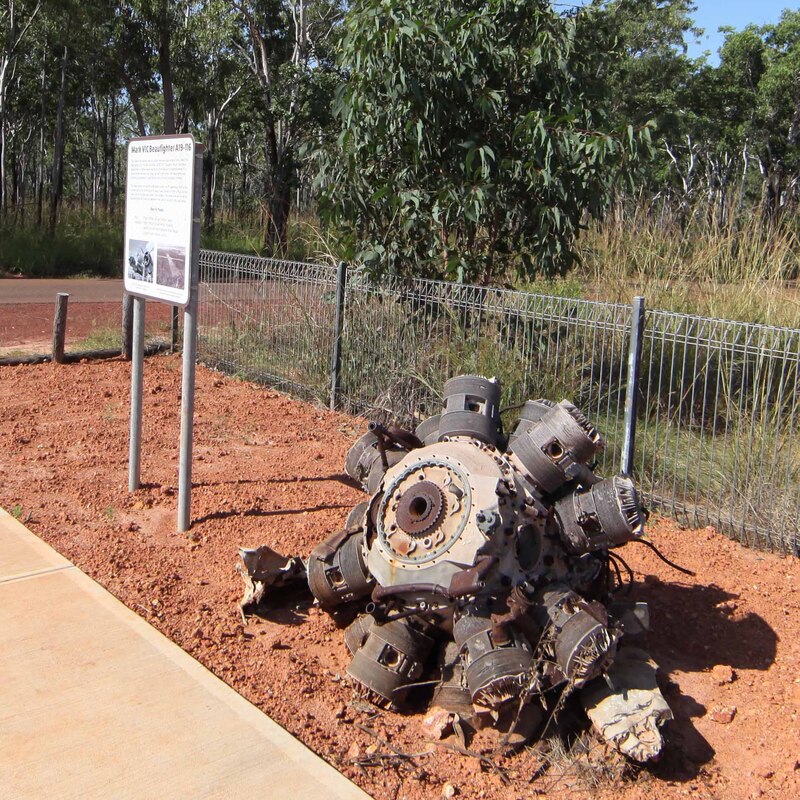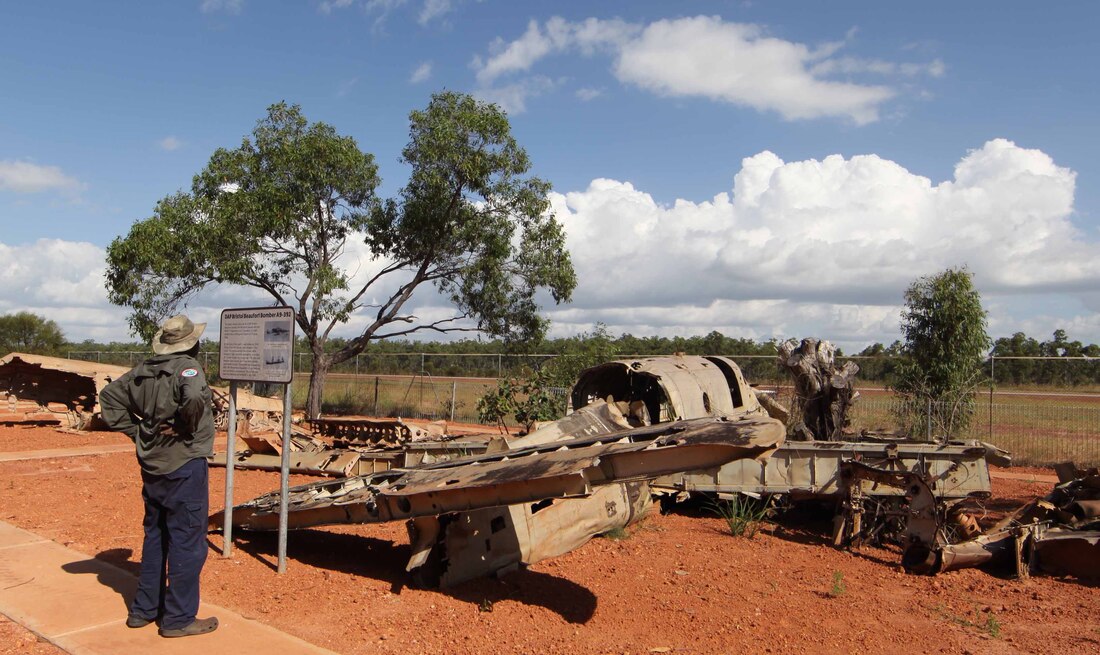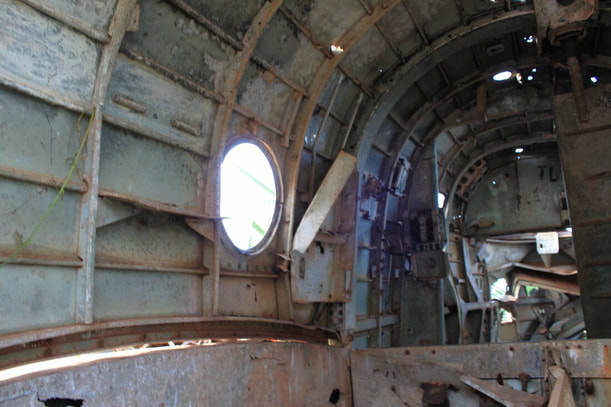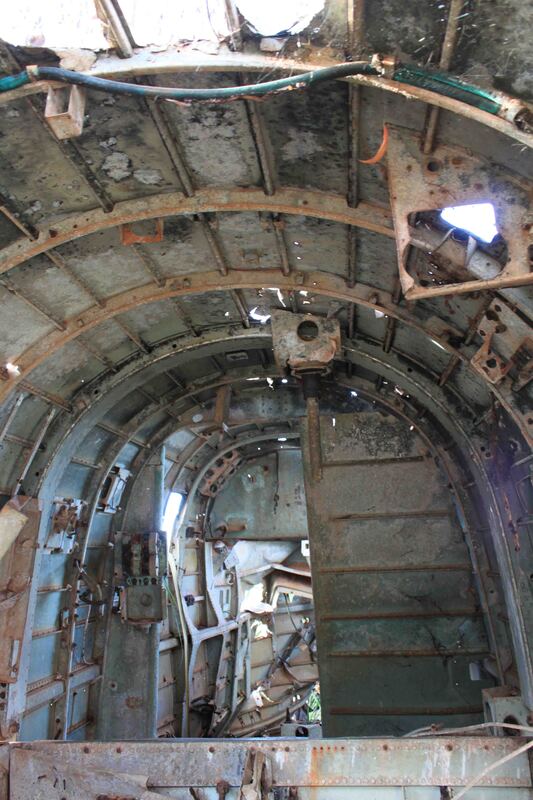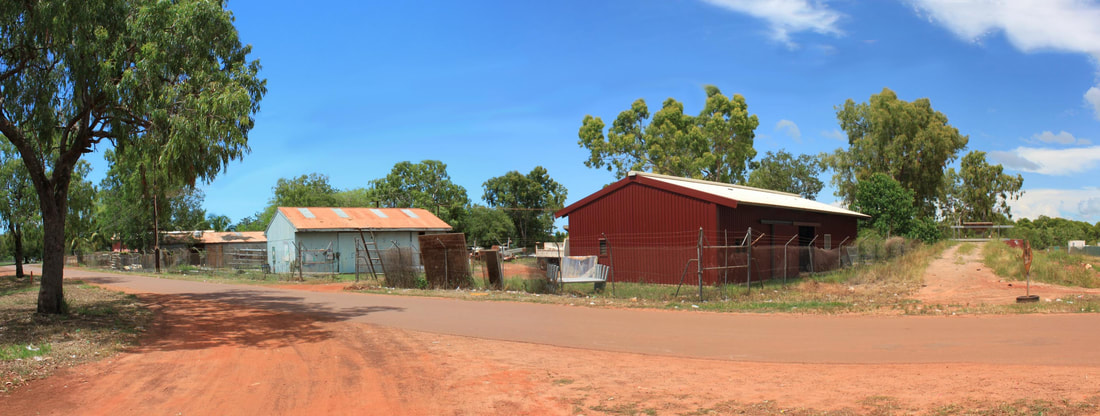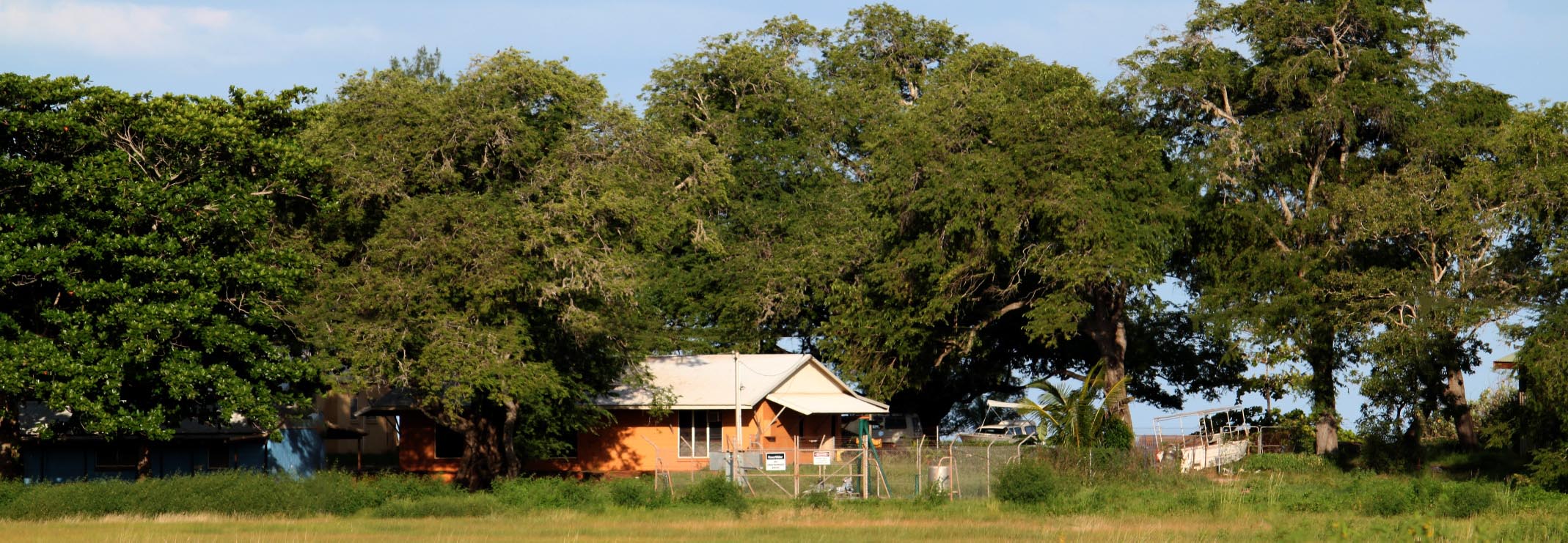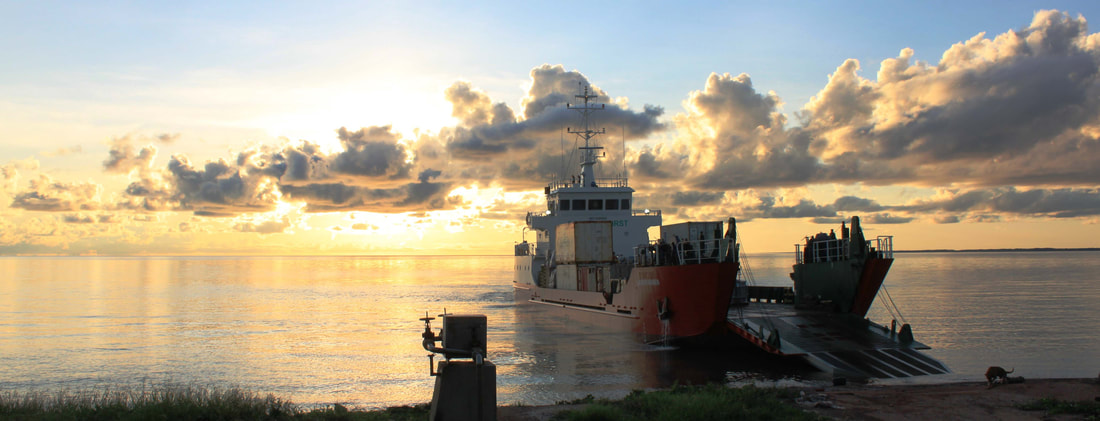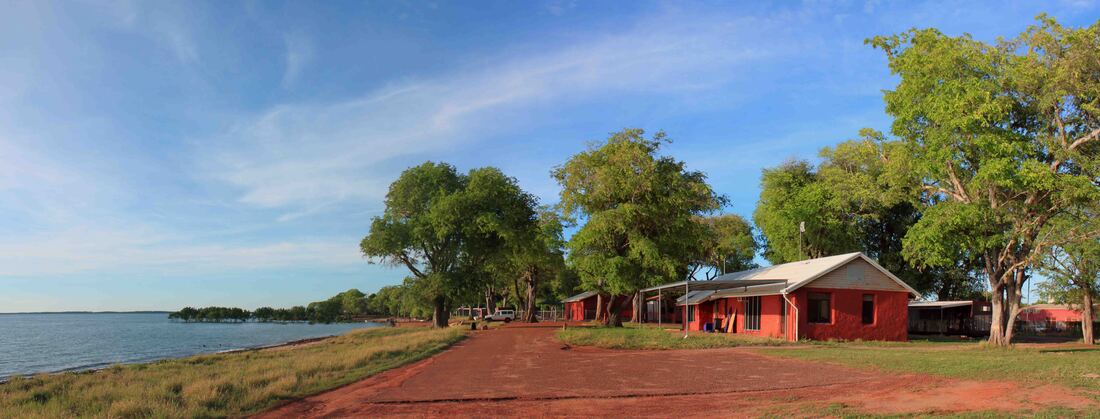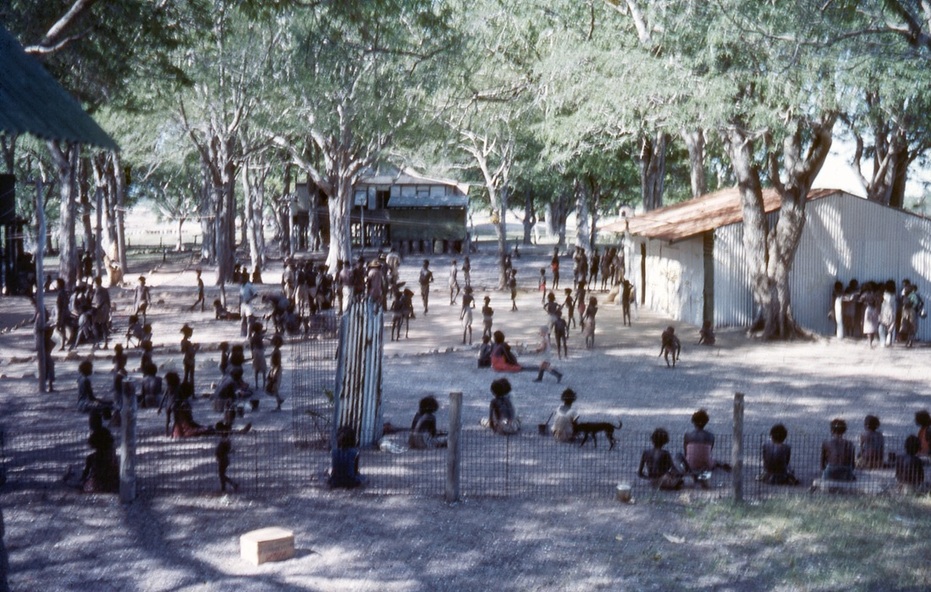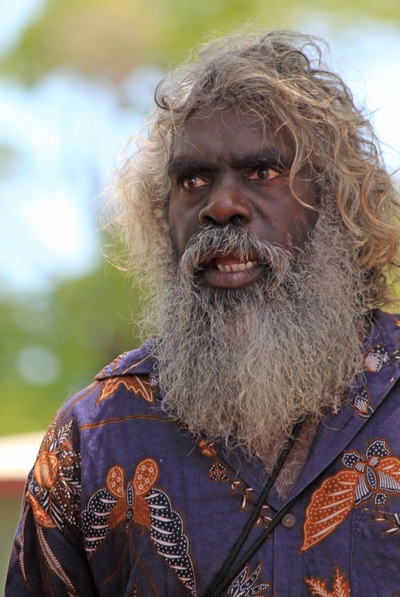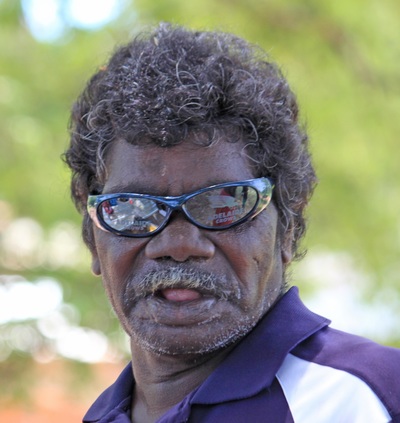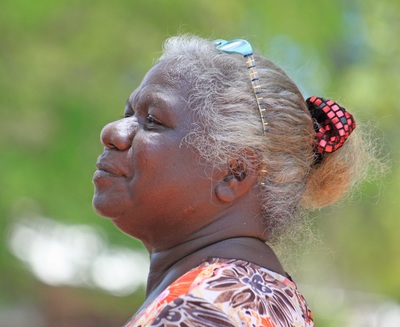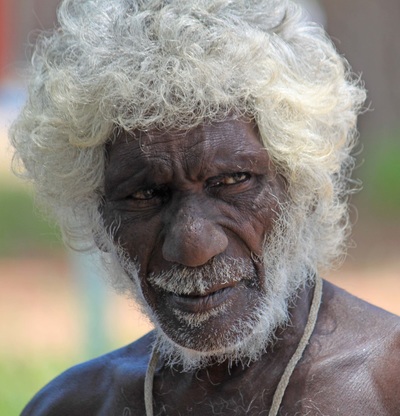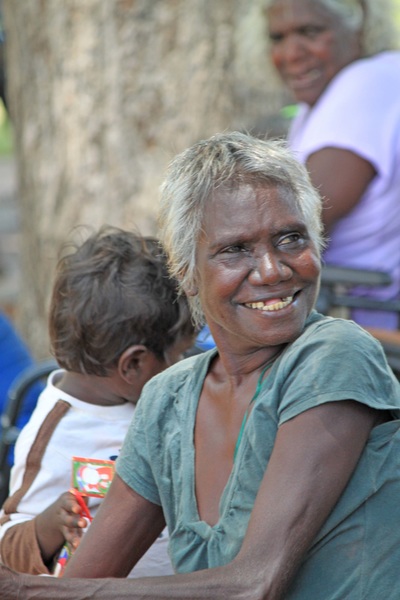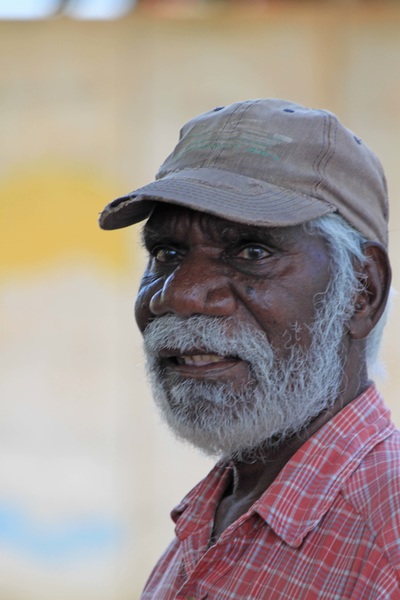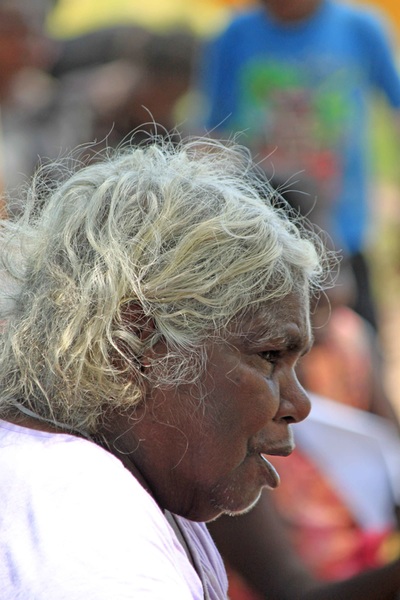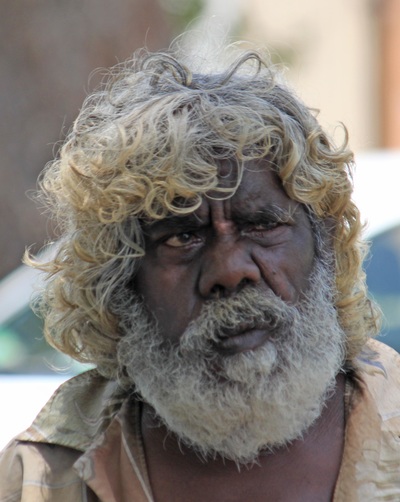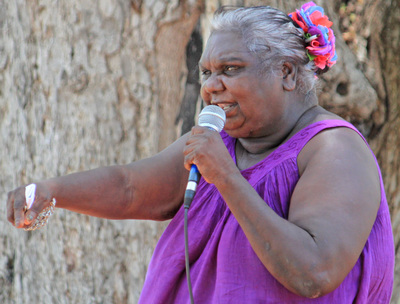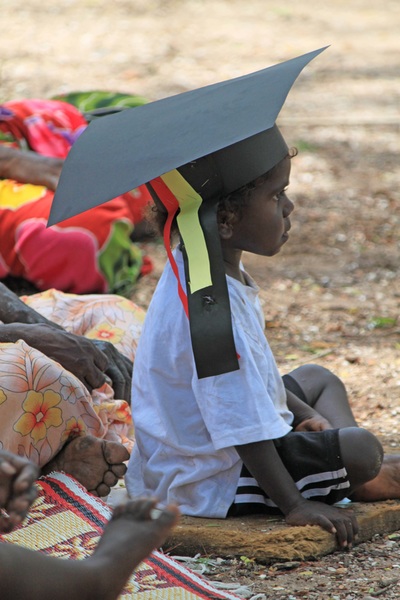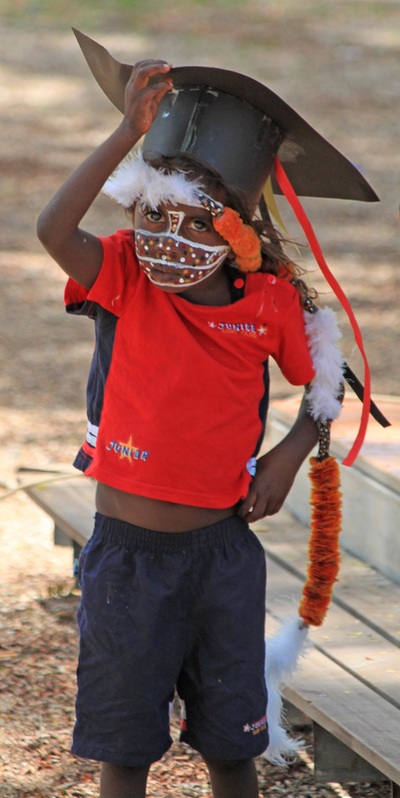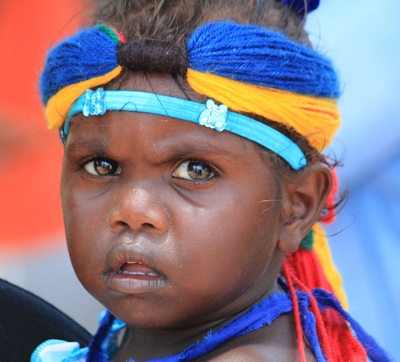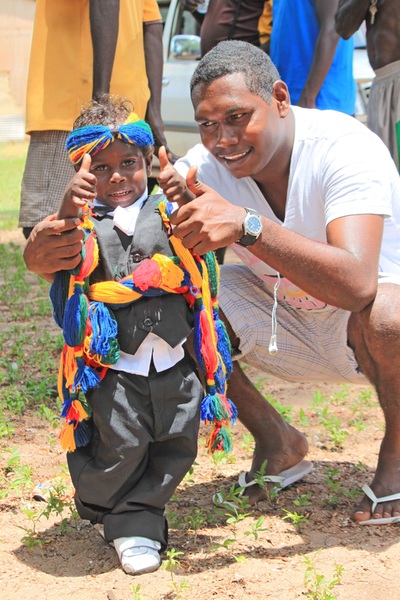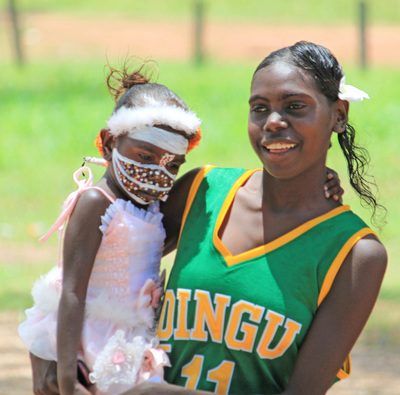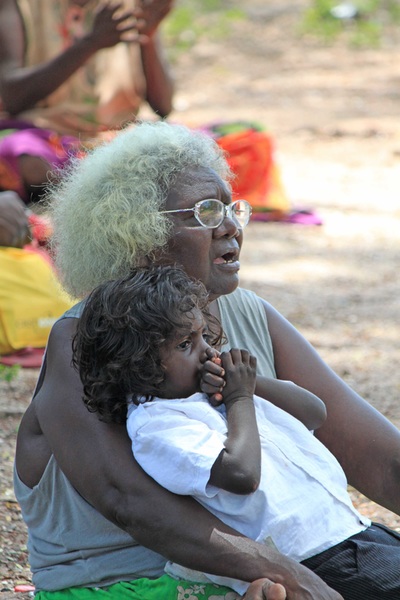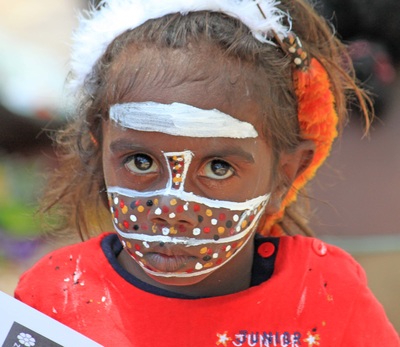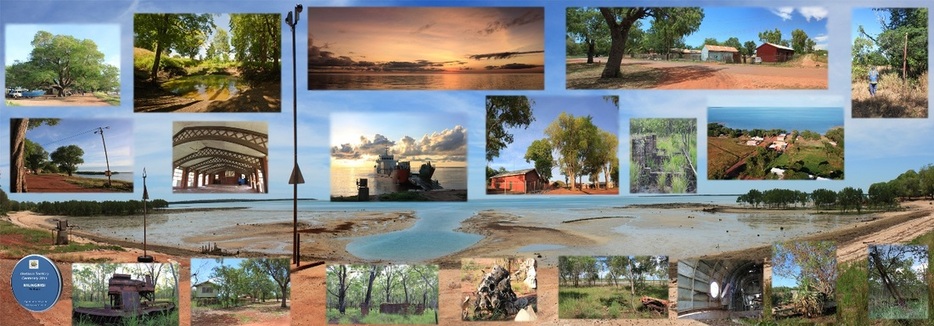MILINGIMBI
Milingimbi community is located on Yurrwi Island, one of the Crocodile Islands group located between the Blyth and Glyde Rivers and separated from the mainland by a narrow channel. It is approximately 500km east of Darwin and 250km west of Nhulunbuy. The Island has a land area of 70km/sq although two thirds of the island is below the maximum high tide level with the highest point on the island only a few metres above sea level. The Walamangu people were the first inhabitants followed by the Wangurri & Gapupuyngu people.
Milingimbi is the most renowned Macassan site through the signature Tamarind trees on the beach & surrounding the old Macassan well. Milingimbi is the common name of the island & community but strictly refers to a small area of land in Bush Camp adjacent to the well of which there were originally three.
Milingimbi is the most renowned Macassan site through the signature Tamarind trees on the beach & surrounding the old Macassan well. Milingimbi is the common name of the island & community but strictly refers to a small area of land in Bush Camp adjacent to the well of which there were originally three.
Fast Facts
Milingimbi is the name of a small area near the main Macassan Well - the island is named Yurrwi.
Milingimbi means Rainbow Serpent.
Estimated Population: 1500 Clan Groups: 20+
Milingimbi hosts the Gattjirrk Cultural Festival annually.
Milingimbi is the name of a small area near the main Macassan Well - the island is named Yurrwi.
Milingimbi means Rainbow Serpent.
Estimated Population: 1500 Clan Groups: 20+
Milingimbi hosts the Gattjirrk Cultural Festival annually.
The Early Days
"On Milingimbi Island I discovered an old Malay well 35ft deep. It was excavated in the typical Malay fashion, the sides sloping at an angle of 45 degrees, so that one could walk down to the waterline. Planted round it were a number of tamarind trees and one of these at a height of 4½ft from the ground had a circumference of 9ft 10in. Taking into account the slow growth of the tamarind, it is computed that this tree must be between 300 and 400 years old. Not far away from the well were huge banks of cockle shells. One bank was 60ft long 12ft wide and 10ft deep. The cockles had been brought from a considerable distance”. (Rev. JC Jennison was quoted in the Adelaide Advertiser 10th May 1923)
Jennison neither asked the local Yolngu nor understood that these banks of shell are a natural phenomenon which mark mass death events in the shellfish that inhabit the virus rich anaerobic mud of the lower foreshore - notably the blood muscle Anadara Granosa. The shells mark old sea levels and at Milingimbi demonstrate the process of the island which degrades to the landward side and progrades to seaward. The co-location of the buried nest of Rainbow Serpent eggs {i.e. a pile of ballast stones} - the foreshore infill of the fish traps and appearance of the island NE of the barge landing demonstrate the rapidity of change in these shallow waters.
The missionaries relocated shells to the well to clear the area for agriculture - principally the growing of peanuts which were sold in Darwin. It has long been assumed that these were not natural marine deposits, as stated by local Aboriginal people and geomorphologists, but middens from feasting at the well and many people have fruitlessly excavated with the expectation of Macassan finds. In 1948 McCarthy & Setzler dug a shell mound end to end for 5 days & "not a single man-made object was recovered from amid the millions of whole and burned cockle shells". Campbell Macknight raised the conundrum that whilst Milingimbi is universally held to be the epicentre of Macassan Marege activity - there has never been found a single sherd of pottery, button, knife, VOC coin or indeed any artefact to prove they were ever there.
Jennison neither asked the local Yolngu nor understood that these banks of shell are a natural phenomenon which mark mass death events in the shellfish that inhabit the virus rich anaerobic mud of the lower foreshore - notably the blood muscle Anadara Granosa. The shells mark old sea levels and at Milingimbi demonstrate the process of the island which degrades to the landward side and progrades to seaward. The co-location of the buried nest of Rainbow Serpent eggs {i.e. a pile of ballast stones} - the foreshore infill of the fish traps and appearance of the island NE of the barge landing demonstrate the rapidity of change in these shallow waters.
The missionaries relocated shells to the well to clear the area for agriculture - principally the growing of peanuts which were sold in Darwin. It has long been assumed that these were not natural marine deposits, as stated by local Aboriginal people and geomorphologists, but middens from feasting at the well and many people have fruitlessly excavated with the expectation of Macassan finds. In 1948 McCarthy & Setzler dug a shell mound end to end for 5 days & "not a single man-made object was recovered from amid the millions of whole and burned cockle shells". Campbell Macknight raised the conundrum that whilst Milingimbi is universally held to be the epicentre of Macassan Marege activity - there has never been found a single sherd of pottery, button, knife, VOC coin or indeed any artefact to prove they were ever there.
A Pictorial History of Milingimbi
The Macassans
The cycad nuts contain neurotoxins that can only be released by prolonged soaking in a river and crushing the pulp to break the cell wall. The absence of water flow in the well would compound an all but impossible task even for the ladies with specialised skills in this process. The residual toxicity ensured that ants and other scavengers would not eat the flour or damper which was carried long distances to ceremonial events but only eaten by adults. The pulp has remarkable healing properties when packed into an open wound - even those that expose the bone. Unfortunately, cancerous growths appear on the surface of the scar and are externally evident at the ears and anus as processors cultivate the single long fingernail for such purposes. Australian Cycad nuts appear in Chinese herbal medicine and are amongst the earliest exports being evident along the trade route through the islands. It is noted that both trepang and Cycad nuts now commercially available as an Asian food - despite the opinion of discerning camp dogs, gulls, ants and bush rats.
Milingimbi Mission
The site was first recommended as suitable for a mission by Rev. James Watson who began the Goulburn Island mission in May 1916 - it was he who recruited three Baduans from the Torres Strait in 1924. However, the Rev. Jennison - then Chairman of the North Australia District of Methodist Overseas Mission - favoured an "industrial mission" and resolved instead to take over a lease of 200sq miles on Elcho Island from a Mr AJ Beckett and in May 1922 the Rev. & Mrs Jennison arrived at Elcho to establish a mission, centred upon the cultivation of cotton utilising Aboriginal labour - there being a world wide shortage of cotton at the time. There were 180 Aboriginal people at Elcho who responded well to the presence of the mission and the dole of a pannikin of flour for breakfast each day. Jennison trumpeted that "The Chief Warden of Mines in the Northern Territory has openly declared that the establishment of Elcho Mission Station has been productive of much good among the natives. This extends for a radius of quite 60 miles from the island and he stated that he had been able to undertake trips into the interior that would have been impossible before our establishment.”
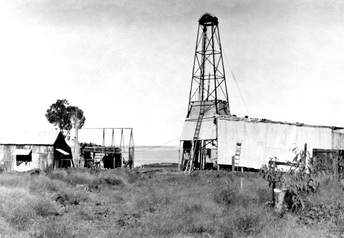 Naphtha Mine Elcho Island
Naphtha Mine Elcho Island
The triumph was short lived as Jennison discovered samples of bitumen on the beach which he sent to Darwin and this precipitated the creation of the Elcho Island Naphtha Petroleum Company Limited which began drilling for oil in 1923 - within sight of the mission house.
Jennison was replaced by Rev. Watson who immediately resolved to relocate the mission to Milingimbi. The Mission house & sheds, which had been built by J.C. Markey, were offered to the mining company who declined saying that the accommodation was of such a high standard that it could not possibly be replicated for its other staff. An early indication of their true commitment to the project.
In 1923 the mission on Elcho Island was abandoned with the house and sheds dismantled and reconstructed at Milingimbi where James Watson (by then District Chairman MOM) & James Robertson were the first resident missionaries.
Jennison was replaced by Rev. Watson who immediately resolved to relocate the mission to Milingimbi. The Mission house & sheds, which had been built by J.C. Markey, were offered to the mining company who declined saying that the accommodation was of such a high standard that it could not possibly be replicated for its other staff. An early indication of their true commitment to the project.
In 1923 the mission on Elcho Island was abandoned with the house and sheds dismantled and reconstructed at Milingimbi where James Watson (by then District Chairman MOM) & James Robertson were the first resident missionaries.
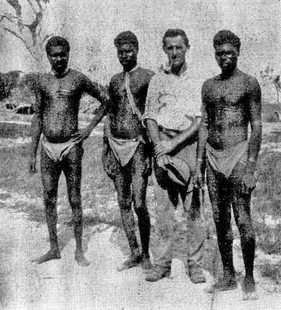 On left is Larry the instigator of the spearing of Robertson who is between two unidentified men.
On left is Larry the instigator of the spearing of Robertson who is between two unidentified men.
The antipathy between Jennison & Watson was to reach fever pitch in 1927 when Jennison publically raised the accusation that Watson had used whips & firearms to intimidate the natives at Milingimbi Mission "to keep the beggars in their place". This use of "revolver muzzle methods" in 1925 supposedly precipitated the spearing of missionary Rev. TT Webb and his assistant Mr James Alexander Robertson at Milingimbi on Sunday 13th February 1927, for which 3 Yolngu, Erranungem, Muckanni & Dowarra were each given 3 years hard labour. The accusation was strenuously denied by Watson and his friends in the newspapers and discounted by the judge.
The three men attacked Webb & Robertson during Sunday service, missing Webb but severely injuring Robertson. There was a confused fracas in which shots were fired and spears thrown and all apparently instigated by Larry Daymaroopna although it was Erranungem who speared Robertson.
The trial caused a sensation when Jennison's accusations were seized upon by defence Counsel Barratt who portrayed missionaries flogging natives with stockwhips. The prosecution maintained that when an offender was sentenced to banishment for such crimes as stealing a melon and playing with the girls – whips were used to herd him to the back of the island where he was forced to swim to other side. A story no doubt appreciated by Bob Baker whose own experience has harmonic resonance.
The three men attacked Webb & Robertson during Sunday service, missing Webb but severely injuring Robertson. There was a confused fracas in which shots were fired and spears thrown and all apparently instigated by Larry Daymaroopna although it was Erranungem who speared Robertson.
The trial caused a sensation when Jennison's accusations were seized upon by defence Counsel Barratt who portrayed missionaries flogging natives with stockwhips. The prosecution maintained that when an offender was sentenced to banishment for such crimes as stealing a melon and playing with the girls – whips were used to herd him to the back of the island where he was forced to swim to other side. A story no doubt appreciated by Bob Baker whose own experience has harmonic resonance.
|
|
| ||||||||||||||||||
|
| ||||||||||||
The Church
In 1926 the Rev T.T. Webb and family arrived. Harry Makarrwala was the first Yolngu church leader and a key informant to American Anthropologist Lloyd Warner whose work 'A black Civilization' is a foundation stone of Australian Anthropology. The first church was destroyed by a Japanese bomb which killed a local man who was sheltering therein. The current church was constructed of mud brick and once sported rows of beautiful wooden pews, a piano and a renowned stained glass window that was made by a firm in England that still exists today - which is more than can be said for most of the above.
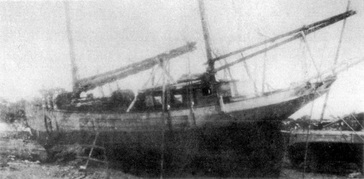 The John McBride in Darwin awaiting installation of the motor.
The John McBride in Darwin awaiting installation of the motor.
In 1928 Harold & Ella Shepherdson arrived from Payneham SA - he was a fitter & turner by trade (Perry Engineering Co.) & being from a highly respected timber industry family he had background & experience in his brother’s mill. Ella had 7 months of basic nurse training at the Methodist Memorial Hospital in North Adelaide. They married on the 8th October 1927 and headed north spending 6 months in Darwin before boarding the newly motorised mission lugger McBride for the trip to Milingimbi with the Rev. & Mrs TT Webb and Yoram the Baduan captain. This began half a century in Arnhemland for the Shepherdsons whose contribution to the survival and development of Yolngu people is unparalleled. Ella became the first teacher at Elcho Island & he became an accomplished engineer, agriculturalist & pioneer aviator. They were instrumental in the establishment of Milingimbi, Elcho Island, Yirrkala and Gapuwiyak and began the homelands movement.
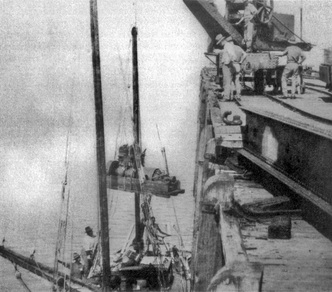 The motor being lowered into the McBride in Darwin 1928
The motor being lowered into the McBride in Darwin 1928
The John McBride was donated by Adelaide philanthropist JM McBride who was a staunch supporter of the Methodist Missions to Northern Australia. She was the ‘crack lugger’ of the Thursday Island pearling fleet – originally named Picton she was renamed by Jennison the John McBride - he wrote "It took seven months to have the name changed, as it had to be done through Lloyds, in London. I personally painted the name on bows and stern, and chiselled it on the main beam, as required by regulation. All the boat slips at Thursday Island, by the way, were in the hands of Japanese pearlers. "I sailed thousands of miles in that boat in two years. She now lies a wreck on the roof of Australia."
The McBride was wrecked on a reef in Rolling Bay 60 miles east of Milingimbi in the early Dry of 1929 before the mission had wireless. They learned of the loss when three weeks after setting out for Darwin the McBride's dinghy appeared back at the Milingimbi instead of the lugger. They had been wrecked on the way into Darwin. The Fijian missionaries had just completed an outrigger canoe which they sailed to Rolling Bay to collect Yoram & the rest of the crew who all survived the experience. She was replaced by the second-hand and leaky Maree which was subsequently badly damaged on a reef in Port Darwin whilst her master played billiards.
The McBride was wrecked on a reef in Rolling Bay 60 miles east of Milingimbi in the early Dry of 1929 before the mission had wireless. They learned of the loss when three weeks after setting out for Darwin the McBride's dinghy appeared back at the Milingimbi instead of the lugger. They had been wrecked on the way into Darwin. The Fijian missionaries had just completed an outrigger canoe which they sailed to Rolling Bay to collect Yoram & the rest of the crew who all survived the experience. She was replaced by the second-hand and leaky Maree which was subsequently badly damaged on a reef in Port Darwin whilst her master played billiards.
Christmas became an important event as presents were collected from an expanding network of mission work supporters in the southern states who would raise funds and collect items such as books and magazine to be sent out by Government ships and mission luggers.
The Shepherdsons arrived in April 1928 there is a photo of Lloyd Warner in their collection in Adelaide. On page 90, Ella says they arrived in 1927 & there is another image in their SA collection of a body beside the main well notated 'an old man killed for his tobacco ration 1927'. Half A century in Arnhem Land is the principal resource & was reprinted under the direction of Bruce Moller of the East Arnhem Shire Council as a resource for orientating balanda staff.
Heath Parasol - Ist Aeroplane built in the Northern Territory
Shepherdsons' Fleet
Sheppy's aircraft established aerial support for remote populations through provision of supplies as trade goods and medical evacuation - the first being in a child at Goulburn Island in 1936 to Darwin in the Miles Hawk.The role played by Harold Guy in partnering Sheppy's aircraft was crucial to the post-war success of the outstation movement. Images are from Ella's 'Half a Century in Arnhem Land' - see also Elizabeth Guy's 'Only a Wife'.
Timber Cutting & Milling
Harold Shepherdson - Engineer & Aviator
The image above shows the pride in accomplishment of Sheppy as an engineer. These old pumps would get so much use that the bottoms would wear through and it was a long and difficult task to braze a new base into the cast iron.
Aerial Images
Agriculture
The Cow Shed
Peanut Harvester
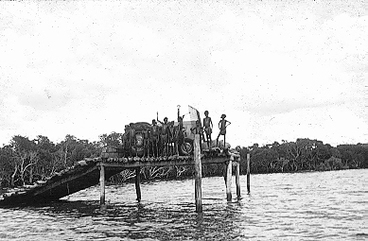
In February 1940 the mission began work on a ₤1,240.00 contract to build a landing strip for the RAAF on Milingimbi. The project involved clearing of 65 acres for the actual runways and a further 75 acres for perimeter and dispersals. Subsequent widening and taxiways accrued a further ₤800
which enabled the purchase of a tractor and much other valuable equipment. The island was established as a significant forward air force base hosting a variety of aircraft but notably Hudsons and Spitfires which became resident after the mission was bombed by the Japanese on the 9th and 10th May, 1943.
The airstrip had the designation of an 'Emergency Landing Ground' but following the bombing of Darwin and the loss of some coastal shipping it became increasingly important as an 'Advanced Operation Base' for intercepting Japanese floatplanes and projecting raids against Japanese shipping & bases across the Arafura Sea.
The airstrip had the designation of an 'Emergency Landing Ground' but following the bombing of Darwin and the loss of some coastal shipping it became increasingly important as an 'Advanced Operation Base' for intercepting Japanese floatplanes and projecting raids against Japanese shipping & bases across the Arafura Sea.
Gove - mid air - water in the fuel
Extracts from the pilots log 1943
Milingimbi 28/5/43
· 8 aircraft were scrambled to intercept 8 Betty Type medium bombers and 4-5 Zeros.
· All Aircraft went into attack individually led by Flight Lieutenant Watson DFC, Flying Officer’s Turner, Blake, Clarke and Beale, Pilot Officer
O’Reilly, Flight Sergeant’s Jenkins and White.
· For the first time our pilots had a good crack at the Bombers and destroyed 3. The Claimants being Flying Officer O’Reilly, Flight Sergeant’s Jenkins
and White.
· Another Bomber being damaged by Flight Lieutenant Watson. All claimed aircraft fell into the sea.
· We lost flying Officer A.H. Blake & B. Beale. Harry Beale had only been married a few months and had seen very little of his wife.
Milingimbi 1/7/45
* Pilots now being housed in a dispersal hut at the north end of the strip.
Milingimbi 28/5/43
· 8 aircraft were scrambled to intercept 8 Betty Type medium bombers and 4-5 Zeros.
· All Aircraft went into attack individually led by Flight Lieutenant Watson DFC, Flying Officer’s Turner, Blake, Clarke and Beale, Pilot Officer
O’Reilly, Flight Sergeant’s Jenkins and White.
· For the first time our pilots had a good crack at the Bombers and destroyed 3. The Claimants being Flying Officer O’Reilly, Flight Sergeant’s Jenkins
and White.
· Another Bomber being damaged by Flight Lieutenant Watson. All claimed aircraft fell into the sea.
· We lost flying Officer A.H. Blake & B. Beale. Harry Beale had only been married a few months and had seen very little of his wife.
Milingimbi 1/7/45
* Pilots now being housed in a dispersal hut at the north end of the strip.
WWII - sinking HMAS Maroubra - loss of life - records of action etc
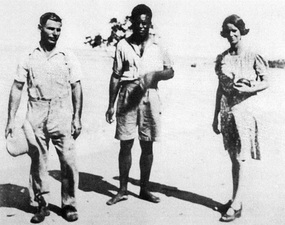 Bapa Sheppy, Aminiasi the Fijian captain & Ella about to depart MIlingimbi in 1942
Bapa Sheppy, Aminiasi the Fijian captain & Ella about to depart MIlingimbi in 1942
[Harold Shepherdson was intent on moving the mission to the relative safety of Elcho Island which also afforded far greater opportunities for agriculture and development. It also lacked Millingimbi's infamous squadrons of sandflies and mosquitoes. A number of Elcho Islanders followed Jennison to Milingimbi and it was this migration that was the source of later conflict.
The bombing of Darwin began the exodus of white women and children leaving only the men and Ella Shepherdson "to keep the home fires burning". Milingimbi was a target so a temporary camp was established at Wurralngura up the Woolen River twenty miles from Milingimbi to which Ella moved with Guritjaluk, Djangirrawuy, Dajwa and family, Mayangila and family amongst others after the mission vessel Larrpan (Morning Star, bringer of good news) had left for the Roper River with the other missionary wives & children. Upon its return it carried Flight Lieutenant Clarence Sandford who had been rescued from Bremer Island by Wandjuk, Gitjbapuy and one other Marika from Yirrkala.
The bombing of Darwin began the exodus of white women and children leaving only the men and Ella Shepherdson "to keep the home fires burning". Milingimbi was a target so a temporary camp was established at Wurralngura up the Woolen River twenty miles from Milingimbi to which Ella moved with Guritjaluk, Djangirrawuy, Dajwa and family, Mayangila and family amongst others after the mission vessel Larrpan (Morning Star, bringer of good news) had left for the Roper River with the other missionary wives & children. Upon its return it carried Flight Lieutenant Clarence Sandford who had been rescued from Bremer Island by Wandjuk, Gitjbapuy and one other Marika from Yirrkala.
Le Tourneau Crane - in bush by Powerhouse
In 1929 the R.G. LeTourneau, Inc. was established in Stockton, CA to build earth moving equipment. In 1935 Gilmour LeTourneau entered into a ten-year symbiotic relationship with the Caterpillar Tractor Company. The novel LeTourneau bulldozer and scraper attachments led to over 300 patents for earth-moving and lifting equipment that was in great demand during WW2 but did not survive long thereafter as Caterpillar added its own range of wheeled machinery following the end of the agreement with LeTourneau. The example at Milingimbi is designed to be driven by a dozer or tractor and remarkably one of the rubber tyres has survived. No other examples are known in the NT as presumably they moved northwards with the allied battlefront.
American-Australian Scientific Expedition to Arnhem Land
McCarthy & Setzler arrived at Milingimbi on 30th July 1948 - they noted that Warner's finds - also on the east side of the well - "simulated our visit to the island". They also examined shell mounds excavated by steam shovel during the war - finding 2 oyster picks, a crude scraper & a pebble mortar. A mile away they dug a shell mound end to end for 5 days & "not a single man-made object was recovered from amid the millions of whole and burned cockle shells". During their entire stay they found no metal implements & no pottery. Contrary to their expectations of such "a large deposit as that surrounding the well" they found only "a somewhat limited range and number" of Aboriginal stone & bone implements. (Records of the American-Australian Scientific Expedition to Arnhem Land. Vol. 2 Anthropology & Nutrition pp230-250)
WWII Artefacts at Airstrip
Around the Camps
The Barge Landing
The original houses was relocated from Elcho Island - the Naphtha Mine declined to purchase them in situ as it would create an unsustainable expectation for future staff accommodation.
The Locals
|
| ||||||||||||
|
| ||||||||||||
|
| ||||||||||||
|
| ||||||||||||||||||||||||||||||||||||||||||||||||||||||||||||
|
| ||||||||||||||||||||||||||||||||||||||||||||||||||||||
